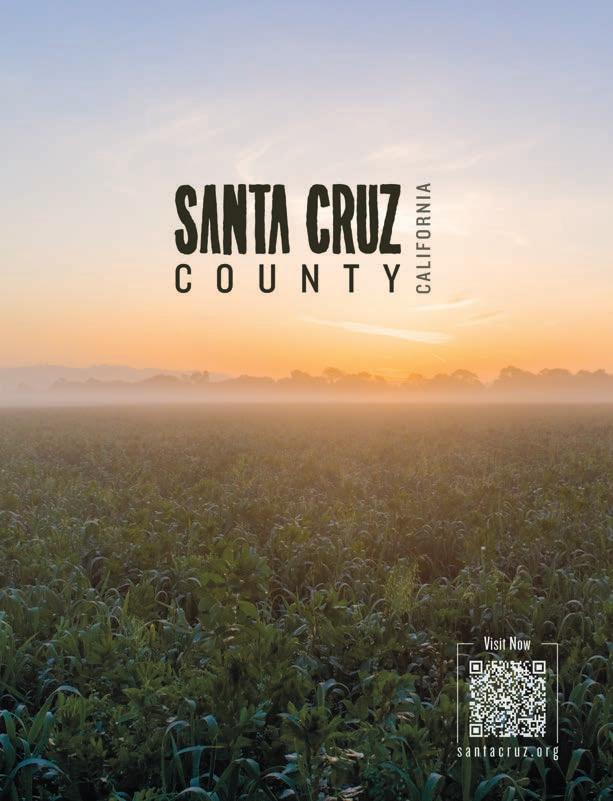






































Fostering connections in the local food community has always been the mission of Edible Monterey Bay magazine, but this year we doubled down and designated 2022 our year of collaborations.
Collaborating is just what we’ve been up to. This special cocktail issue you’re reading is the result of one alliance, this one with Event Santa Cruz—Matthew Swinnerton’s community-focused company behind Midtown Fridays Summer Block Parties and the NEXTies Awards.
Together we are hosting the first-ever Monterey Bay Cocktail Week from September 17 to 25 and response has been enthusiastic, with 19 bars and restaurants participating so far. Recipes and photos of some of their special Cocktail Week drinks can be found in this issue, along with stories intended to up your cocktail game and inspire you to try something new.
So please mark your calendar and plan for several nights out on the town the third week of September, visiting participating establishments. It’s going to be a blast!
The foundation of our publication, of course, is the partnership we have with our much-appreciated advertisers, many of which have been with us since the magazine started in 2011. Over the years, we have also developed strong collaborations in the non-profit sector with the Homeless Garden Project, MEarth, EcoFarm, Farm Discovery at Live Earth Farm and the annual Open Farm Tours—coming up this year on October 8 and 9.
Then there are two new projects we want to let you know about. This summer Edible Monterey Bay collaborated with Hagerty, the specialty car insurer, to produce the Motorlux kickoff party for Car Week at the Monterey Jet Center. We were asked to help organize chefs and catering for the August 17 event with special emphasis on showcasing the best, most sustainable local foods the Monterey Bay area has to offer.
The party for 2,500 guests was beyond compare thanks to our amazing local participating chefs: David Baron, Matthew Beaudin, Brad Briske, Todd Fisher, Klaus Georis, Ivan Guadarrama, Dexter Salazar, Jérôme Viel, Tim Wood and the entire Coastal Roots Hospitality team. We can’t wait to do it again next year.
Lastly, we are excited to announce a new collaboration with Visit Santa Cruz County. The destination management organization is charged with promoting the north side of the Monterey Bay to visitors and realized many of the stories in EMB do just that.
Together we will be creating a new style of visitor guide based in good local journalism that introduces tourists and potential tourists to the people who make Santa Cruz County the very special place it is. The first issue of the new VSCC Visitor Guide produced and edited by Edible Monterey Bay will be released in early 2023.
At a time when so many print publications are facing difficulties, I’m grateful to report we are finding our way through these tough times with new collaborations. As the song goes, we’re better together!
EDITOR AND PUBLISHER Deborah Luhrman deborah@ediblemontereybay.com 831.600.8281

FOUNDERS Sarah Wood and Rob Fisher CONTRIBUTING EDITOR Mark C. Anderson
COPY EDITOR Doresa Banning
LAYOUT & DESIGN Matthew Freeman and Tina Bossy-Freeman
AD DESIGNERS Bigfish Smallpond Design Coline LeConte • tracysmithstudio Zephyr Pfotenhauer
Jeff Bareilles • Robert Eliason • Margaux Gibbons • Coline LeConte • Carol Oliva • Ashley Owen • Paulette Phlipot • Joshua Grant Rose Chris Schmauch • Tracy Smith • Laura Sutherland • Michael Troutman • Shmuel Thaler Patrick Tregenza • Jessica Tunis • Amber Turpin
ADVERTISING SALES ads@ediblemontereybay.com • 831.600.8281 Shelby Lambert shelby@ediblemontereybay.com Kate Robbins kate@ediblemontereybay.com Aga Simpson aga@ediblemontereybay.com
DISTRIBUTION MANAGER Mick Freeman • 831.419.2975
CONTACT US: Edible Monterey Bay P.O. Box 487 Santa Cruz, CA 95061 ediblemontereybay.com 831.600.8281 info@ediblemontereybay.com

Edible Monterey Bay is published quarterly. All rights reserved. No part of this publication may be used without written permission of the publisher. Subscriptions are $28 per year at ediblemontereybay.com. Every effort is made to avoid errors, misspellings and omissions. If, however, an error comes to your attention, please accept our apologies and notify us. We also welcome letters to the above address. Thank you.
Deborah Luhrman Publisher
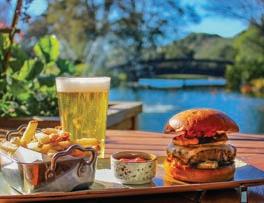
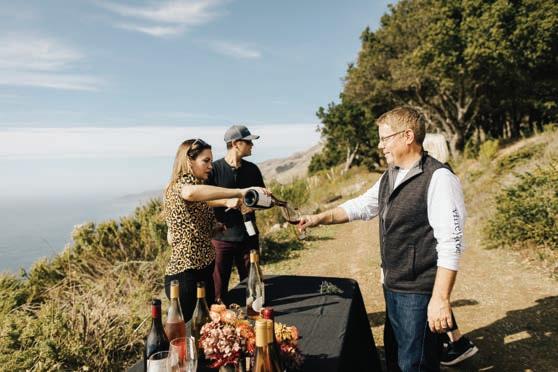


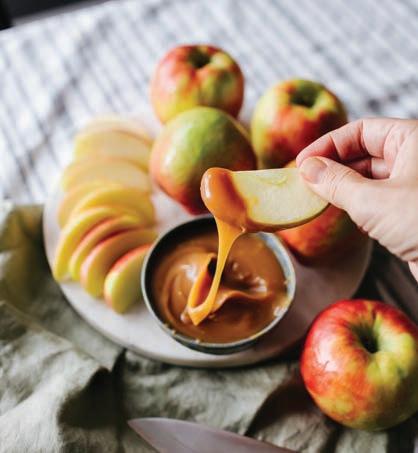
Down a dead-end road in Soquel, inside a remote warehouse, there’s a harvest every Monday, Tuesday and Wednesday. But it’s not what you think. No illegal substance is cultivated here. Only crystal clear, diamond-like cubes. Ice cubes, that is, are farmed and harvested to exact specifications for the Monterey Bay area’s most discriminating mixologists, chefs and bartenders. Welcome to the ice farm at Revolution Craft Ice.
Ice farming isn’t new. In the 19th and early 20th centuries, ice was harvested from the frozen surface of lakes, ponds and streams; stored in ice houses; shipped in ice cars and delivered in ice wagons by ice men to be placed in ice boxes. Harvesting ice and cold shipping revolutionized the fruit, vegetable, meat and fishing industries and was the catalyst for developing our current food and beverage industries.
Revolution Craft Ice CEO Tim Gallagher cuts crystalline blocks into cubes with a repurposed meat saw and supplies high-end watering holes around the Monterey Bay.

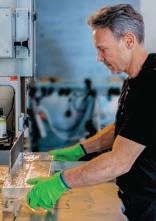
Today ice farming usually refers to one of three (or more. . .think Breaking Bad) activities. Pumping water through a complex system of pipes and showerheads over a frozen gorge, creating icy walls for ice climbing. Second, playing the bestselling game Minecraft where the silk touch enchantment tool comes in handy to harvest virtual “ice blocks” used to fuel jump drives and build starbases. And third, the peculiar labor of making clear-as-glass ice cubes to be added to cocktails and spirits.

RCI’s founder and cocktail aficionado Ethan Nagel explains how it all started. “A few years back, I ordered a cocktail in one of San Francisco’s hipster bars, and it arrived with a perfectly clear ice cube suspended in it. It was beautiful, intriguing and piqued my curiosity. I needed to know exactly how to make and bring them to Santa Cruz!”
Nagel, a software engineer who’s run the gauntlet of Silicon Valley startups, returned to his home in downtown Santa Cruz and started experimenting with DIY methods for making clear ice. His research led him to a system that involved boiling filtered tap water, then pouring it into a small cooler, putting the entire cooler in the freezer, waiting a couple of days for the water to solidify and then cutting the transparent parts of the block into cubes. But, after multiple attempts, he
found that his Playmate Cooler wasn’t turning out the enchanted ice that made him swoon.
Nagel had hit a wall, but it didn’t stop him. Instead, his drive to unlock the secret of making crystal clear ice became an obsession.
“I bought a Clinebell Block Ice Maker specifically designed to make large ice blocks for carving ice sculptures,” he explains.
The ice maker produces two 300-pound blocks of crystal clear ice every three to four days through a slow-freezing cycle. A pump mounted inside the machine’s cabinet circulates the water, preventing impurities from freezing into the block or forming oxygen bubbles and striations, which make carving difficult.

“I also purchased a car engine hoist to lift the ice blocks out of

These perfectly shaped cubes shimmer, sparkle, shine, refract light like a prism and melt three times slower than regular ice.Soquel-based RCI specializes in clear ice for craft cocktails.
the ice maker, a chain saw to break the ice down into manageable blocks, a Hobart meat band saw to cut the blocks into cubes and a large chest freezer to store the ice,” Nagel says.


If you haven’t come across these cubes, they’re nothing like the dull gray crescentshaped chunks your refrigerator freezer plunks out or the sweaty ice made from tap water that commercial machines dump into bins. Instead, these perfectly shaped cubes shimmer, sparkle, shine, refract light like a prism and melt three times slower than regular ice.
Beyond their bling, cocktail culture’s devotion to these cubes is due to their purity, density and slow melting rate. And like a flame tamed to combine ingredients in cooking, ice is the spark that unifies the components in a cocktail.
Back in Nagel’s garage, he got the ice right, but things were getting crowded, and around this time, friend and fellow cocktail lover Tim Gallagher stopped by for a drink.
Gallagher, a psychologist, was astonished, he says. ”Ethan made me a negroni with one of his clear cubes. I’d never seen anything like it. Then he took me into his garage to show me all the equipment he had bought.”
Gallagher continues, “It was amazing, and I immediately offered to help him with production.”
At the start, RCI was a solo act with Nagel loading up an insulated backpack and getting on his bike to hand out samples to neighborhood bars and restaurants.
It wasn’t long before the demand for his clear cubes took off. Not only had Nagel built an ice farm, but he had also cultivated a following. However, it was becoming hard for him to keep up with the rising demand, spend time with family and work as a software engineer. So, he asked Gallagher if he wanted to partner on the fledgling business. Without hesitation, Gallagher agreed, moved the farm to a warehouse, purchased a second Clinebell ice maker and hired a production and delivery assistant.
Today Gallagher, CEO, and Nagel, president, have six employees, three Clinebell ice makers, nine freezers, the original meat saw and two packaging tables. They make six different sized cubes, with the 2-by-2-inch cubes and 1¼-by-5-inch Collins cubes being the most popular. Nagel has designed a proprietary framework that fits into the Clinebell, making the ice easier to handle and cut into cubes. With this addition, what once took over an hour to cut a block into 40 to 60 cubes now takes less than 10 minutes.
Afterall, the word revolution in their company name references using technology to make things better.

RCI’s client list looks like the Who’s Who of restaurants and bars in the Monterey Bay area. Mentone, Alderwood, Venus Spirits, Copal, Bantam, Avanti, Carmel Valley Ranch, Pearl Hour, Barmel, C bar at InterContinental The Clement and Aubergine all serve RCI cubes and RCI also sells them wholesale and retail online.
If you’re curious to try a spirit or cocktail with an RCI cube without going through the fuss of making it yourself, stop by Mission West Bar, a neighborhood hangout on the westside in Santa Cruz where co-owner Max Turigliatto keeps a stash under the bar. “It’s worth having them for their wow factor alone. People pick them up, take pictures and are generally blown away,” he says.
Turigliatto, a mixologist himself, reasons, “If you’re going to make an effort to barrel age cocktails, squeeze fresh juice, make your own bitters and use top shelf spirits, you want to use the best quality ice possible.”
Revolution Craft Ice
2827 S. Rodeo Gulch Road, Ste. 11 Soquel revolutioncraftice.com
Jeff Bareilles is a Santa Cruz-based hospitality consultant, artist, photographer and writer who has overseen the beverage programs at some of the finest restaurants in California, including Manresa, Atelier Crenn, Commis and Mourad.
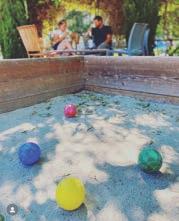










San Juan Bautista couple puts local spin on a California classic
STORY AND PHOTOGRAPHY BY ROBERT ELIASONEverything about Foustman’s uncured dried salami is distinctive, from the variety of base meats and styles to its retro-hip packaging and marketing strategy. Owners Jessica and Justin Foust have found ways of combining beef, lamb, pork and turkey with garlic, fennel, black pepper, habaneros, red wine and other natural ingredients to redefine the classic San Francisco staple in a way that has brought them an ever-expanding customer base.
“I grew up in Santa Cruz and we always had San Francisco-style salami on sourdough with a slice of cheese,” says Jessica. “It’s a childhood memory, and that is where my heart is. It is a great product and a perfect fit for us.”
Jessica's father, Mark Holsman, owned the Cheese Connection in Soquel. When he retired, they took over the business, and decided to create their own brand and product.
Salami was also a very good fit for Justin. His grandfather, Fred Moro, was a member of the Santa Cruz Marconi Civic Club and as a child Justin accompanied him on weekend trips to San Francisco.
“My grandfather’s side job was to go up to The City and pick up salami, which he would deliver down the coast from San Francisco to Santa Cruz,” he says. “I would go with him and meet all these old Italians, who introduced me to salami and prosciutto. When we were deciding what to make, salami was always at the top of the list, with my childhood memory of salami sandwiches with pepperoncini.”
Two young entrepreneurs reached back to their roots to find a product they wanted to make and sell.
Coming up with the name for the product was easy: Foustman’s combines Justin’s last name with the last part of Jessica’s maiden name. The next step was to find manufacturing partners, and the Fousts relied on a family business that had worked with her father at his shop.
“We went to them because they have been making salami for four generations,” Jessica says. “They have the expertise, and we were able to develop our recipes with them and go into production right away.”
Foustman’s launched with six varieties of salami and pepperoni, producing about 300 pieces a month and selling at just one venue. They’ve increased production to about 10,000 salamis a month with flavors that include Pork, Fennel and Pepper, Lamb Rosemary, and Pork and Beef Pepperoni.

“We started with just the Alvarado Street farmers’ market,” Jessica says. “We would bring about six of each of our six flavors, and we would sell out. Now we do four farmers’ markets a week, we have 14 flavors
and we have to bring about 30 of each to cover the demand.”
Foustman’s growth has been organic, relying on word of mouth and selling mostly in small venues, like fairs and markets, and independent stores like Garlic World in Gilroy, which has been stocking the sausage for a year and a half.

“Foustman’s is really starting to gain ground with our customers,” says Garlic World owner Brian Oteri. “We originally had them in the back of the store but moved them up front and center at the counter. The packaging is top-notch, the flavors are phenomenal and they keep coming up with new ones. It is a great gourmet, independently made sausage.”
Headquartered in San Juan Bautista, Foustman’s makes its salami in a USDA-approved commercial kitchen in Oakland, where there is a temperature-controlled room for fermenting and curing the Californiasourced meat. The entire process takes anywhere from two and a half to three weeks, depending on the moisture content.
We are currently playing around with a Bloody Mary salami, with maybe some bacon in it, and one for Thanksgiving, something like a sage-cranberry turkey salami
“It takes less time than you would think, by the look of all the mold all over them.,” Justin says. “But that is one of the good things about it—you can get a good shelf-stable product in a short time.”
The Fousts rotate their flavors and are always thinking about new ways to make their product.
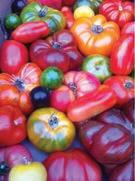
“We are working on lamb with Middle Eastern spices,” Justin says. “But we haven’t gotten the spice level right yet. We are currently playing around with a Bloody Mary salami, with maybe some bacon in it, and one for Thanksgiving, something like a sage-cranberry turkey salami. We had one customer suggest putting orange zest in salami, and we are wondering how we can do it.”
Sometimes, their creativity pushes the envelope a little too far. Justin says they developed one hot salami that was like Ghost Pepper chicken wings. “It made your face feel on fire for about ten minutes after eating it,” he says.
One recent success is a salami made with beer, which has made the Fousts interested in collaborating with local breweries.

“I would like to see us do limited edition salamis,” he says. “We could do them in batches of 300 or so. You could have it at your brew house to slice up and sell, and we could also sell it on our end to promote the brewer.”
As demand continues to grow, the Fousts are regrouping a bit while they consider expanding.

“When we started, we didn’t know what we were doing,” Justin says. “We wanted to keep it small and independent. We have been approached by bigger stores like Safeway, but they would have taken all the salami we have ever made. We would really have to consider the rent on a new facility and the other costs of meeting that kind of demand.”
Having spent the past five years at farmers’ markets growing their customer base, Jessica would like to keep the chain stores out of things for now.

“I would rather work with little grocery stores and wineries,” she says. “I think more and more people want to buy from independent retailers. Vendors are reaching out to us from all over the country, and we may become national just that way. We think our product is a perfect fit for these small, unique places where you can talk face to face with the owners and the customers. It is very satisfying, and making them happy makes us happy.”
Foustman’s Salami foustmans.com

Robert Eliason lives in San Juan Bautista and has worked as a photojournalist and rare book dealer. Two years ago, he was asked to cover for an absent reporter and since then has written more than 350 freelance articles for publications in three counties. And he still has time to take the occasional photograph or two.
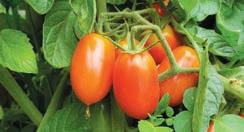




 BY MARK C. ANDERSON PHOTOGRAPHY BY MARK C. ANDERSON AND SHMUEL THALER
BY MARK C. ANDERSON PHOTOGRAPHY BY MARK C. ANDERSON AND SHMUEL THALER
Bryant Terry typically takes a few years off between cookbooks.
That makes sense. His books are behemoths. In concert with his cooking, they win James Beard and NAACP Image Awards. They require cooking, re-cooking, writing, re-writing, testing, re-testing, sweating, editing, photographing, touring and not enough sleeping.
Plus he’s got another thing or two going on: He directs a publishing imprint and his own creative studio—the latter with his wife and daughters—and he’s chef-in-residence at the Museum of the African Diaspora in San Francisco, where he designs events around the intersection of food, farming, health, activism, art and culture.
But no gap between books this time.
Because…early summer 2020. Terry’s scheduled tour for a previous book was interrupted by COVID. Then he was engulfed by a reckoning in the wake of George Floyd’s murder and so many more before it.
“This country was being forced to look at a lot of its ugly past and ways to move forward,” he says. “That was the impetus for me to start work on another book right then, to share conversations I was having…with the world.”
Flash ahead two years and Terry is quoting an original poem from that latest book, Black Food: Stories, Art & Recipes From Across the African Diaspora, at the Homeless Garden Project’s farm on the westside of Santa Cruz.
“Rice” is a poem by farmer-activist-anthropologist Dr. Gail Myers that sprawls across millennia, forced migration and staggering loss, but refuses any separation of nourishment from the past.
Bryant Terry speaks at the Homeless Garden Project (Photo by Shmuel Thaler/ Santa Cruz Sentinel)We are rice people first. We see beauty in the wind, We taste truth in the rain.
For this dish we made to remember the six million souls beneath the sea. We are rice…
After five books of his own—including Vegetable Kingdom and Vegan Soul Kitchen Black Food summons a vast anthology of art, photography, poetry, essays, personal narratives and mouthwatering recipes, all curated and edited by Terry.
So it felt fitting he curated others for the talk at HGP.
“This food is the gift of the whole universe, the earth, the sky and much hard work,” was the next thought he shared, drawing from Buddhist monk Thich Nhat Hanh’s “Five Contemplations,” which closes with, “We accept this food in order to realize the path of understanding and love.”
By eating mindfully, Terry continued, a simple meal transforms into “a deep experience” and heightens awareness not only of tastes and textures but also the toil, soil, air and heritage that go into it.
“Everything is connected,” he said.
Those ideas led his keynote at the Homeless Garden Project’s annual Sustain Supper fundraiser. Before the vegetarian meal, supporters got a tour of HGP’s 3.5 acres in Santa Cruz, where trainees learn farming while supplying the county’s first ever community-supported agriculture subscriptions (and one of its most robust, to this day).

Thanks to the generous donations of time and ingredients by talented local chefs, HGP’s Sustain Supper helped finance its training programs.
HGP merits a pilgrimage to pick up produce from the storybook farmstand or simply soak up the setting: The dried-flower barn, which helps furnish finished products like salves, teas, hand-dipped candles and cookie mixes at its downtown retail spot, is among the must-sees.


“Our model is built around people doing things for themselves, not anything being done for them,” HGP executive director Darrie Ganzhorn says.
Or as Bryant said at Sustain Supper, “What impresses me about the Homeless Garden Project is everything is connected.”
He isn’t exaggerating. HGP connects urban to agricultural, neglect to opportunity, food to belly, on-site training to 14-step job counseling and post-program housing.
Ganzhorn expands on that.
“The farm offers a place of belonging. It offers safety. It offers a lot of tangible feedback: Trainees plant a seed and see it grow, they tend it and see it flourish, they harvest and feed our team—and our community— fresh, healthy, organic produce,” she says. “The farm helps all of us who come there take better care of ourselves and each other.”
Back at the HGP podium, Terry put it poetically: “Sustainability and sustenance must be braided together.”
Across 309 pages and 111 contributors, through various artistic mediums (including a playlist), diverse geographies and far-ranging ingredients, Black Food braids together the African diaspora in countless ways.
The copy Terry signed for me will live at Lifelong Medical Care’s East Oakland Clinic to help patients discover recipes grounded in health and inherited history.
But it won’t be getting there as soon as planned, because I started reading it and can’t put it down.

Not for the recipes, though they look damn good—from coconut cornbread pudding to okra-and-shrimp purloo to Terry’s own Dirty South hot tamales with cilantro sauce.
It’s for the essays like chef Thérèse Nelson’s, which deftly describes, in part, how civil rights victories liberated Blacks from the kitchen just as it was becoming a place of prestige, and how closely tied Black cooking is to the wider planet’s, drawing connections previously hidden behind ignorance.
When Terry signs the inside of Black Food, he writes in Sharpie, “May this book inspire!”
It does that from the start of his intro, with another curated quote, this one from Audre Lorde: “Sometimes we are blessed with being able to choose the time, and the arena, and the manner of our revolution, but more usually we must do battle where we are standing.”
That battle, he told Edible later, doesn’t need to happen with marches or community canvassing (though they help mightily).
“Like many people do, I used to default toward what I thought activism is: agitation and base building,” he says. “For me it was important to broaden activism: There are many ways we can imagine and practice it. Being on the streets isn’t going to work with everyone. Base building isn’t going to work for everyone. Like I said at [HGP], you can contribute time and talent and treasure, and by learning, volunteering, reading and writing.”
His work collaborating on MoAD events

inspired Black Food, which in turn generated Black Food Summit, coming September 9–10. Day One happens at MoAD with panels on publishing, storytelling and design, followed by a reception with sips, small bites and records spun by DJ Max Champ. Day Two follows at TomKat Ranch in Pescadero, with a slate of “experiential learning and communal leisure” ranging across hikes, reflective writing, gardening, breathwork and even equine activities, and concluding with a community supper made by standout Black chefs from the Bay Area.
The summit’s operating premise harkens back to Terry’s seminal work launching New York City nonprofit b-healthy (Build Healthy Eating and Lifestyles to Help Youth), a longitudinal initiative designed to empower youngsters to fight for a more sustainable food system.
“Like we will with [Day Two’s events] we would use cooking to start with the visceral to ignite the cerebral and end with the political,” he says.
So while the message sounds like a hippie mantra—everything is connected—here’s the thing: If audiences receive the truths Bryant Terry teaches, and observe its vibrations at the Homeless Garden Project, what sounds kumbaya is a call to battle.
The battle is not a simple one or an easy one—or one that can be done alone.
It comes in sowing connections like those leaping from the pages of Black Food and the soils of Santa Cruz.
And it’s a worthy battle, accompanied by a lot of incredible food.
Homeless Garden Project Store 1338 Pacific Ave., Santa Cruz homelessgardenproject.org
Mark C. Anderson is a roving writer, explorer and photographer based in Monterey County. Follow and/or reach him on Twitter and Instagram @MontereyMCA.
Organic, Sustainable, Handcrafted

creating community through food
731 MUNRAS AVE SUITE B MONTEREY • 831.646.3109


“Sometimes we are blessed with being able to choose the time, and the arena, and the manner of our revolution, but more usually we must do battle where we are standing.”

•handcrafted cocktails & award-winning wine list
•pet-friendly outdoor terrace with fire pits


far from the tree
Autumn is the time of apples in their greatest profusion, variety and freshness. Like so many foods, they have been commoditized to the point where we expect access to them year round, but truly fall is their time to shine, in all their green and red and yellow and russet crispness. Each variety embodies a particular flavor and texture, which of course influences the role they play in cookery. The following recipes are meant to highlight and celebrate this commonest of fruits in uncommon ways.

This is a riff on an old Dutch recipe that Jess’ mother used to make for a special after-school treat. The word olliebollen translates literally to “oil ball” (the apple dough is fried in hot oil) and has been described as a precursor to the doughnut. In Holland, olliebollen are a seasonal sweet, enjoyed in the new year, but when the Dutch came to these shores, they became more of a year-round goodie. We’ve further adapted them to this land by replacing the traditional raisins and currants with dried cranberries. We think the tart pop of the native cranberry suits the recipe better than the sweetness of raisins, but use your discretion, or experiment with what seems best to you.
For the dough
½ cup milk ¼ cup butter ¼ cup sugar
1 package active dry yeast ¼ cup warm water
2¼ cups all-purpose flour
½ teaspoon salt
½ teaspoon ground cinnamon 2 eggs
1 cup tart apple, peeled and chopped
½ teaspoon grated lemon peel, or use a small citrus zester to make longer strips of lemon peel from 1 medium lemon
2/3 cup dried cranberries, chopped Sunflower or avocado oil, for frying
For the topping
¼ cup granulated sugar
¼ cup powdered sugar
1 teaspoon ground cinnamon
Scald the milk in a small saucepan. Remove from heat and add the butter and ¼ cup sugar. Stir until the butter is melted and set aside to cool.
In a large mixing bowl, sprinkle the yeast on the surface of the warm water and let it stand for 5 minutes to rehydrate and awaken the yeast. Whisk the cooled milk mixture into the yeast slurry.
In another bowl, combine the flour with the salt, cinnamon and lemon peel. Add ½ of the flour mixture to the liquid yeast mixture, beating until well-blended.
Add the eggs 1 at a time, beating well after each addition. Add the remaining flour mixture and blend well. Stir in the apples and cranberries.
Cover the bowl and set in a warm place to rise until doubled in size, about 1¼ hours. Dough should be spongy and moist.
When the dough has risen, pour 2 inches of oil into a heavy-bottomed saucepan, and heat to 350° F.
Lower heaping tablespoonfuls of the spongy dough into the boiling oil, 3 or 4 at a time. Cook the blobs, turning once, until a rich golden brown color develops.

Remove the olliebollen from the hot oil with a slotted spoon and allow to drain on paper towels for a brief moment, while you get the next few balls into the fryer. While the dough is still warm but no longer draining oil, roll the fried dough shapes in the topping mixture, composed of both powdered and granulated sugar, and cinnamon.
These are loveliest when still warm from the oil, but they can also be eaten cold for breakfast or frozen and reheated for 10 minutes in a 400° F oven. Makes 12-15 olliebollen.
Are you one of those people who are always on the hunt for the perfect sweet to savory to salty ratio in your snacking sessions? These apple chips, dehydrated or baked, are a healthy alternative to processed grain snacks, and play with the concept of sweet with savory components. The main ingredient is just apples! You’ll want to use about one apple per dehydrator tray, depending on the size of the trays. It is best to avoid really juicy apple varieties when dehydrating, but sweeter varieties are nice to counterbalance the savory seasonings. We recommend using fuji, gala, pink lady, honeycrisp, or golden delicious apples. If you prefer tart flavors, use varieties like granny smith, pippin, McIntosh or jonagold. The flavors will concentrate as they dry.
1 teaspoon Old Bay seasoning

1 teaspoon curr y powder and pinch kosher salt “Cheezy Flavor” 1 tablespoon nutritional yeast and pinch kosher salt

Wash and dry the apples. Using a very sharp knife or mandoline, thinly slice the apple into 1/8-inch rounds. You can remove the core and seeds if desired, but it is not necessary. It is important to keep the thickness of the cut apples even for consistency in drying time. To prevent browning, soak the apple slices in lemon water.
Layer the slices on your dehydrator trays evenly, avoiding any overlapping, and sprinkle with desired seasonings.
Dehydrate at 125º F or 52º C for 4–6 hours for chewy dried apples OR up to 8–10 hours for crispy chips. (Remember, they will crisp up even more as they dry and cool.)

Rotate the trays once halfway through the drying time, and check them once every hour or so to make sure they are not overcooking.
Note: If you don’t have a dehydrator, you can also make these in the oven. Set the temperature to 180° F. Spread the sliced apples on parchment-lined baking trays (single layer, no overlapping) and bake for 2–3 hours, flipping the slices every half an hour.
Tip: After cooling, or over time, if your apple chips are not as crisp as you prefer, you can reheat them in a low oven for a couple of minutes. Just be sure to watch them closely to prevent overcooking and burning.

This classic stew is perhaps best suited for fall, when the air gets a bit crisp and you crave a cozy bowl of something hearty. This version incorporates apples and leeks, while omitting the traditional tomato and chili powder elements we associate with chili. But don’t worry, you won’t miss them.
3 tablespoons neutral oil
1 large leek or 2 small leeks, cleaned and sliced
1 teaspoon kosher salt
1 teaspoon whole cumin seeds
½ teaspoon ground coriander
½ teaspoon ground black pepper
1 teaspoon fresh thyme
1 large bay leaf
2 tart green apples (granny smith, etc.), cored, seeded and cut into small chunks
2 15-ounce cans white beans, rinsed and drained (or 4–5 cups cooked white beans)
4 cups chicken or vegetable broth
Heat oil in a large soup pot over medium heat. Add the chopped leeks and sauté until softened and slightly caramelized. Add the salt, cumin seeds, coriander, black pepper, thyme and bay leaf and stir to combine well. Add the chopped apple and stir, cooking another couple of minutes to soften.
Add the beans and the broth, mixing well, and simmer on low for about 20 minutes. Taste and adjust the seasonings if desired.
Serve topped with grated cheese, sour cream or crispy bits of bacon. Makes 6–8 servings.
Contributors Amber Turpin and Jessica Tunis live in the Santa Cruz Mountains and have been friends for a long time. They share a love of food and writing, adventure and good company.





















Autumn is our in between season. At the outset it’s hard to imagine being coaxed into the kitchen for some cozy baking project. We get our glorious September season, when it is still hot outside and the days are long, which provides golden opportunities to fit in everything we haven’t yet done in the summertime. Enjoy those outdoor grill-fests, campout cooking, quick burrito beach days. But come late fall, that inevitable temptation to roast, simmer and bake
Felton Farmers’ Market
1–6pm • May through October 120 Russell Ave. • 831.454.0566 santacruzfarmersmarket.org
El Mercado Farmers’ Market
2–6PM • April through October Pinto Lake City Park, Watsonville 831.726.4257 • pvhealthtrust.org
Center for Agroecology Farmstand
Noon–5pm, June 22 through November


Cowell Ranch Hay Barn at UCSC 831.459.3240 • casfs.ucsc.edu
Downtown Santa Cruz Farmers’ Market
1–6pm • Year-round Lincoln and Cedar • 831.454.0566 santacruzfarmersmarket.org

away the chilly day returns. Even if you’re using up those lateseason tomatoes that stubbornly hang on the vine, it is likely they’ll be headed for the chili pot instead of a fresh Caprese salad. And that’s perfectly great. Maximize the seasonal shift, while teetering on the borderlands of summer and fall. Blurry lined autumn meals can have the most fantastic flavors of all. —Amber Turpin
Aptos Certified Farmers’ Market
Center for Agroecology Farmstand
11am–3pm, June 22 through November Cowell Ranch Hay Barn at UCSC 831.459.3240 • casfs.ucsc.edu


Watsonville Certified Farmers’ Market
2–7pm • Year-round Watsonville City Plaza, Peck & Main streets 831.588.7366 facebook.com/watsonvillefarmersmarket
8am–Noon • Year-round 6500 Soquel Drive • 831.728.5060 montereybayfarmers.org




Westside Santa Cruz Market
9am–1pm • Year-round 2801 Mission St. • 831.454.0566 santacruzfarmersmarket.org
Scotts Valley Farmers’ Market
9am–1pm • May to November 5060 Scotts Valley Drive, Boys & Girls Club Parking Lot • 831.454.0566 santacruzfarmersmarket.org
Live Oak/Eastside Farmers’ Market
9am–1pm • Year-round 21511 E. Cliff Drive • 831.454.0566 santacruzfarmersmarket.org
Corralitos Farm & Garden Market
11am–3pm • Year-round 127 Hames Road • 831.724.1332 wayne@catalyst2001.com
Saturday

3–7pm • Year-round Central and Grand avenues 831.384.6961 everyonesharvest.org
Tuesday
Certified Farmers’ Market
9am–1pm • May through September 3690 The Barnyard 831.728.5060 • montereybayfarmers.org
Alisal Certified Farmers’ Market
11am–4pm • May to October 632 E. Alisal St., Salinas 831.384.6961 • everyonesharvest.org
Old Monterey Marketplace & Farmers’ Market
4–7pm • Year-round Alvarado Street • 831.655.2607 oldmonterey.org
Wednesday
11am–3:30pm • May to October 1441 Constitution Blvd., Salinas 831.384.6961 everyonesharvest.org
Thursday

10am–2pm • Year-round 6th and Mission streets 831.402.3870 • goodrootsevents.com
Soledad Certified Farmers’ Market
4–8pm • April 2 to October 7 137 Soledad St. • 831.674.2849
Friday
8am–noon • Year-round 1410 Del Monte Center 831.728.5060 montereybayfarmers.org

Salinas Valley Memorial Certified Farmers’ Market 12:30-5:30pm • May to November 450 E. Romie Lane • 831.384.6961 everyonesharvest.org
The Power Plant
Certified Farmers’ Market 10am–2pm • Year-round 7990 Highway 1, Moss Landing 831.726.6855 • thepowerplant.store
Sunday





Marina Certified Farmers’ Market
10am–2pm • Year-round 215 Reservation Road • 831.384.6961 everyonesharvest.org

8

See opposite side for Santa Cruz County tear out and keep 4 5 6 7 8 9 10 11 12 13









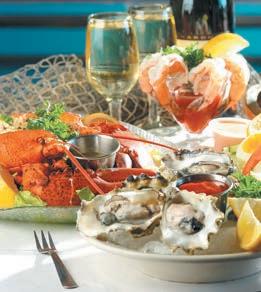



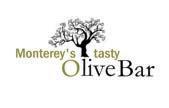


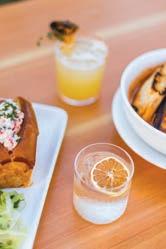

Cocktails make us happy. Whether enjoyed during a night on the town, mixed up for a party with friends or just sipped quietly to wind down at the end of a hard day, there’s a spirit that will help make any occasion a special one.
We’re shaking things up this fall with our first ever cocktail issue! Edible Monterey Bay has teamed up with Event Santa Cruz to shine a spotlight on local bars and restaurants that make a special effort to offer a high-quality cocktail experience.
While all of them do an outstanding job transforming top shelf gin, bourbon, whiskey, rum and tequila into the classic drinks we know and love, we asked each participating establishment to create a special cocktail for this issue.
These delicious drinks will be available during Monterey Bay Cocktail Week from September 17 to 25. Please stop by some of the places listed below and get a taste of cocktail culture. Then try to mix them up at home. Each recipe makes one cocktail unless otherwise noted. Cheers!

Alvarado Street Brewery & Bistro – Carmel PLAZA
Alvarado Street Brewery & Grill – Monterey
Brophy’s Tavern – Carmel
Bud’s at La Playa – Carmel
Chocolate – Santa Cruz
Copal – Santa Cruz
Cultura – Carmel
East End Gastropub – Capitola
Estéban at Casa Munras Garden Hotel – Monterey
Jack O’Neill Restaurant & Lounge at Dream Inn – Santa Cruz
Jacks Monterey at Portola Hotel – Monterey
Links Club – Carmel PLAZA
Lucia at Bernardus Lodge – Carmel Valley
Pangaea Grill – Carmel
Pour Girl
Venus Spirits Cocktails & Kitchen – Aptos and Santa Cruz
Vim – Santa Cruz
The Whisky Club – Monterey
Wild Fish – Pacific Grove
Carmel Plaza, Carmel
With its combination of bourbon, apple and spice, this cocktail created by lead bartender Melanie Bullock is like autumn in a glass.

2 ounces Old Forester Bourbon
½ ounce apple juice
¼ ounce ginger liqueur ¼ ounce lemon juice
¾ ounce cinnamon syrup
Cinnamon, freshly grated, for topping Star anise, for garnish
Place all ingredients in a cocktail shaker with ice. Shake until chilled, strain into a coupe glass. Grate fresh cinnamon on top and garnish with star anise. Photo by Michael Troutman.
San Carlos & 4th, Carmel
A mind-bending margarita bound to inspire your next no-no, Brophy’s cocktail is a tribute to MLB all-star pitcher Dock Ellis.
2 ounces Casamigos Blanco Tequila

1 ounce passion fruit purée
½ ounce simple syrup
¼ ounce lime juice
Lime wheel, for garnish
1 jalapeño, sliced, for garnish
Coat the rim of a rocks glass with tajín, a Mexican spice blend of chili peppers, lime and salt. Fill a cocktail shaker halfway with ice, add ingredients. Shake vigorously. Pour over fresh ice in the rocks glass. Garnish with lime wheel and jalapeño slices. Photo by Patrick Tregenza.
426 Alvarado Street, Monterey
There’s more than award-winning craft beer on offer at this popular downtown Monterey watering hole. Lead bartender James Wall keeps things spicy with his apricot-flavored cocktail.
1½ ounces Breckenridge Spiced Whiskey
1 ounce apricot cinnamon shrub

¾ ounce lemon juice
¾ ounce Cardamaro

½ ounce Bitter Truth Apricot Liqueur
3 dashes peach bitters
Cinnamon, for garnish
1 dried apricot, for garnish
Measure all ingredients into a cocktail shaker. Fill with ice and shake until chilled. Pour into a tall glass with fresh ice. Garnish with a sprinkle of cinnamon and a dried apricot. Photo by Michael Troutman.
Camino Real & 8th, Carmel
La Playa’s newly restored bar and restaurant is a tribute to Carmel’s bohemian roots. This drink commemorates Clint Eastwood, whose political career began when former owner Bud Allen convinced him it would be more productive to run for mayor than sit around complaining. The Mayor is distinguished by bittersweet flavors and smoked maple undertones.
2 ounces Knob Creek Rye Whiskey

¼ ounce simple syrup
4 dashes Angostura bitters
4 dashes orange bitters Orange peel, for garnish
Place large square ice cube in rocks glass. In a cocktail shaker, place all ingredients and stir together. Pour over ice cube. Squeeze orange peel around the rim of the glass and place inside. Photo by Patrick Tregenza.
545 Lighthouse Avenue, Pacific Grove
In keeping with its philosophy of sourcing from local farms and fishermen, Wild Fish makes the most of seasonal produce and locally produced elderberry syrup in its farmers’ market cocktail. Kick back and enjoy it while listening to live jazz on Friday and Saturday nights.

2 ounces Gray Whale Gin
1 ounce Benedictine
1 ounce Carmel Berry Co. Elderberry Syrup
1 ounce lime juice
5 blackberries
6 leaves Thai basil plus sprig for garnish
1 greengage plum, chopped Ginger beer
Muddle together all ingredients except the ginger beer. Strain over ice into a Collins glass and top with ginger beer, then stir. Garnish with a sprig of basil. Photo by Margaux Gibbons.
1501 41st Avenue, Capitola
Long known for its wide selection of local craft beer and wine, East End Gastropub is getting started with cocktails this fall. And it’s off to a strong start with bartender Faith Ellinger’s juicy margarita.

2 ounces Arette Blanco Tequila
2 ounces fresh watermelon juice
1 ounce Combier Triple Sec
1 ounce freshly squeezed lime juice
Watermelon edge, for garnish Watermelon salt, for garnish
Combine all ingredients in a cocktail shaker. Shake, shake, shake. Pour over ice. Garnish with a watermelon wedge and watermelon salt, which can be made by combining 1 part kosher salt with 1 part dehydrated watermelon pulp. Photo by Coline LeConte.
1522 Pacific Avenue, Santa Cruz
The Chocolate Mint Mojito is a reflection of owner-chef David Jackman’s commitment to flavor balance. Since cocktails are for adults, he holds back on the sweetness just enough to let the earthy chocolate and aromatic mint reveal their magic.

4 ounces gold rum, divided
2 ounces dark chocolate
12 leaves fresh mint plus leaves for garnish
2 tablespoons sugar
8 ounces sparkling water
Slowly heat dark chocolate with 2 ounces rum until melted and smooth. Muddle mint leaves with sugar. In a cocktail shaker, place remaining 2 ounces gold rum, rum/chocolate mixture and mint/sugar mixture. Stir until sugar is dissolved. Fill 2 tall glasses halfway with ice, pour equal amount of cocktail into each glass and top with sparkling water. Garnish with fresh green mint. Makes 2 cocktails.
Photo by Jeff Bareilles.

Dream Inn, 175 W. Cliff Drive, Santa Cruz
For this unique cocktail inspired by two classics—a Ramos fizz and a margarita—bartender Nick Barnes grills and chars the grapefruit halves to concentrate the flavor and cut the tartness.
1 medium grapefruit, halved, grilled and charred
1½ ounces Bozal Tepeztate Mezcal
½ ounce agave syrup
1 ounce club soda
1 egg white
Splash of lime juice
3 dashes Angostura bitters
Juice the grilled grapefruit, retaining a couple of triangles for garnish. Add juice and rest of ingredients to a cocktail shaker and give it a dry shake. Add ice and shake some more until frothy. Pour into a coupe glass and garnish with skewered grapefruit triangles. Photo by Jeff Bareilles.


Befitting one of Monterey Bay’s most elegant resorts, this autumn punch from mixologist Colleen Kelly combines spiced pears, tangy cranberry juice and a dash of bubbles.


2 ounces Ginraw Gastronomic Gin
½ ounce St. George Spiced Pear Liqueur
2 ounces cranberry juice
1 ounce freshly squeezed lime juice
Prosecco
Orange slices, for garnish Lime slices, for garnish Rose petals, for garnish Fresh mint, for garnish
Combine gin, spiced pear liqueur, cranberry juice and lime juice in a cocktail shaker. Shake well and pour into a Bordeaux wine glass over generous ice and top off with prosecco. Garnish with slices of orange and lime, rose petals and mint.
Photo by Patrick Tregenza.
Carmel Plaza, Carmel
Yes, you can play on the golf simulator here or dine, while indulging in a seasonal cocktail that benefits from the use of super-smooth Han Vodka.
2 ounces Han Vodka
1 ounce fresh lime juice Blueberries, raspberries, strawberries (whatever you prefer)
Fresh thyme Splash of soda Slice of lime, for garnish
Muddle berries and thyme. Add to cocktail shaker with vodka, lime juice and ice. Shake well and strain into tall glass. Garnish with additional berries, a sprig of thyme and slice of lime.
Photo by Mark C. Anderson.
Just what the doctor ordered! Bartender Fabian Osornio’s gorgeous cocktail kills the pain equally well for surfers and beach bums alike
2 ounces Four Roses Single Barrel Bourbon
¾ ounce apricot liqueur

½ ounce fresh lemon juice
½ ounce Campari
Orange zest, for garnish
1 Luxardo cherry, for garnish (optional)
Edible flowers, for garnish (optional)
Stir all ingredients in a mixing glass, pour over fresh ice in a small rocks glass. Garnish with orange zest and a Luxardo cherry or edible flowers.
Photo by Joshua Grant Rose.
Mobile cocktail catering and Bar Bella

Inspired by the purple sand at Pfeiffer Beach in Big Sur, Pour Girl Olana Sullivan makes this effervescent beauty by combining local gin, lavender bitters and zingy Meyer lemon with aquafaba for an ocean foam-like mouthful.
4 ounces Venus Spirits Gin No. 01
2 dashes Scrappy’s lavender bitters
2 ounces Meyer lemon juice
2 ounces aquafaba*
2 ounces lavender syrup**
Combine and dry shake all ingredients for a foamy texture, then add a scoop of ice and gently shake again to chill. Strain liquid into 2 coupe glasses and garnish with a lavender blossom. *Aquafaba is a vegan substitute for egg whites. Strain the viscous water in which chickpeas have been cooked and use it to make a flavorless vegan foam. **See Edible Monterey Bay website for how to make lavender syrup. Makes 2 cocktails. Photo by Carol Oliva.

425 Alvarado Street, Monterey
Mitchel Sawhney has one of the world’s largest collections of Laphroaig 40-year-old scotches and has always enjoyed the peaty and smoky flavors of Islay scotches. But he realizes this flavor profile can be too strong initially, especially for bourbon aficionados, so his Laphroaig Immunity Cocktail has been created to softly introduce the peaty flavor, with a little added froth and boost for fall and winter immunity.
2 ounces Laphroaig Select
¾ ounce immunity shot (freshly pressed turmeric, ginger and echinacea juice)
¾ ounce honey syrup
5 drops freshly pressed ginger juice
5 drops of Peychaud’s bitters
1 egg white
Orange peel, for garnish Candied orange twist, for garnish Candied ginger, for garnish
1 Luxardo cherry, for garnish
Spritz a rocks glass with Laphroaig 10-year-old scotch. Add all ingredients except egg white to a cocktail shaker and stir. Add white of 1 egg. Dry shake for about 15 seconds, then add ice and shake for another 30 seconds to create the froth and ensure ingredients meld. Pour into rocks glass over fresh ice. Flame an orange peel and rim the glass, if desired. Garnish with a candied orange twist, speared candied ginger and Luxardo cherry.
200 High Road, Santa Cruz
131 Esplanade, Aptos
Not your grandmother’s fruit cocktail, this pretty pink pleaser by bartenderGabriel Yescas makes the most of Santa Cruz distilled gin and local fruit.

2 ounces Venus Spirits Gin No. 01
¼ ounce watermelon syrup
¼ ounce passion fruit liqueur
2 dashes peach bitters
½ ounce fresh lemon juice
Fresh fruit pieces, for garnish Sprig of fresh lavender, for garnish
Add all ingredients to a cocktail shaker filled with ice. Shake and strain over ice into a tall glass. Garnish with pieces of fresh fruit and a lavender sprig.
Photo by Coline LeConte.




 BY LAURA SUTHERLAND PHOTOGRAPHY BY CHRIS SCHMAUCH
BY LAURA SUTHERLAND PHOTOGRAPHY BY CHRIS SCHMAUCH
Everyone has a story about the place, like the Manhattan-based fan who said, “My parents think I come to Santa Cruz to visit them, but I really come home to eat at Tacos Moreno.”

Or when Austin Swift left for college in Montana and his mother overnighted him three Tacos Moreno al pastor burritos so he wouldn’t get homesick—one for him and one for each roommate. Swift ate all three in ten minutes.
Nicole Baran’s dad introduced her to Tacos Moreno when she visited her grandparents in Santa Cruz as a child, and now when she
swings through town on her way to and from meetings in Santa Cruz and Monterey, she stops by the Water Street restaurant and settles into a seat to eat four corn quesadillas pre-meeting and four more post-meeting.
Lines go out the door, looking like a cross section of life in Santa Cruz—lawyers in power suits taking a break from a trial, construction workers in yellow vests, mothers with babies in strollers, hungry high school kids, farm workers, surfers and office workers. The line goes fast, with some people taking orders to go, but hardcore regulars, like Baran, say, “The salsa is so good—you need to sit down with the squeeze bottle in front of you and put a splash of salsa on every single bite.”
Exactly what goes into the salsa is top secret, “but there are tomatillos and some of the peppers are grilled,” says founder/ patriarch Esteban Moreno. “We make 30 gallons at a time.”
“We also use chile Japones in the salsa…and oregano,” adds his wife Maria, who has all the recipes in her head, which makes it easy to keep them private.
Maria immigrated to the US at age 17 from a small village in Michoacán, where her family always had a home garden. She met Esteban in Watsonville, and after he took her to a taco truck for dinner a few times, she told him, “We could do this.” Esteban bought a food truck and they started serving Maria’s version of the food she learned to make in Mexico.
“During the day we’d go park at Plantronics,” at that time one of the biggest employers in the county, says Esteban, “and then we’d go to downtown Watsonville at night.” In 1982 they moved to the restaurant on Water Street in Santa Cruz—so 2022 marks their 40th anniversary.
Ask a Tacos Moreno fanatic what to order and most will say, “Get the al pastor—it’s a religious experience.”
“Al pastor is definitely the most popular flavor,” agrees Esteban. “We marinate our pork for a minimum of a day and then grill it. The secret is in the marinade,” but like the salsa, he won’t give out many details.
Retired Santa Cruz cabinetmaker Bruce Larsen figures he’s eaten well over 2,500 al pastor burritos over the past 40 years—and that number is still climbing. “My shop


was a few minutes’ drive from Tacos Moreno, and I’ll bet I’ve had at least one or two burritos every week since they opened. In addition to the world’s best salsa, the burritos are unusual in that they don’t contain rice, only meat, perfectly cooked pinto beans, fresh cabbage, finely chopped onions and tomatoes.”
The flawless texture of the pillowy firm beans is regularly praised by devotees. “We cook an entire bag, 50 pounds, of pinto beans at a time,” says Esteban.
“Maria first washes the beans over and over again,” points out niece Maclovia Gonzales, who works at the restaurant, “and then she knows just how much water and just how much salt to add…she cooks by feel and they turn out perfect every time.”
Maria’s beans even helped their daughter Carina win five women’s world boxing championships in three different weight classes. “When I wanted to drop a weight class, I’d cut out meat and get my protein from my mother’s beans,” she laughs. Today Carina is a member of the International Women’s Boxing Hall of Fame and runs her own boxing gym in Watsonville, “but I still help my mother cook at the restaurant when she asks.
“I’ve learned all of my mother’s recipes except for her mole,” says Carina, “because it takes so long to make.”


Maria’s mole is a full-day affair. It contains guajillo chiles, cumin, cloves—and, of course, more ingredients that she won’t reveal. If you want to taste it, order something with chicken to experience its spicy, earthy, complex flavors.


Every year Tacos Moreno closes down for three weeks in December and most people think that Maria and Esteban leave to visit family in Mexico, but it’s not the case. “The first week we strip down the restaurant and clean it from top to bottom. The second week we take a break or maybe a vacation. The third week we put the restaurant back together. Then we’re back to our regular schedule, working seven days a week,” says Maria.
The unpretentious taquería has won legions of local fans over the past four decades.

Other family members have opened restaurants, like sons Esteban, who runs the 41st Avenue Tacos Moreno, and Uriel, who operates one in Capitola Village. De La Hacienda Taquería in Santa Cruz is operated by Maria’s sister and brother-in-law, who use many Tacos Moreno recipes. Plenty of family members work or have worked in Tacos Moreno over the years, and patriarch Esteban has a new food truck that is used for parties and special events.
When I asked Maria one last time what makes the salsa so extraordinary, nephew Steven Moreno happened to be passing by our table. He didn’t miss a beat when he shouted out, “Amor!” Santa Cruz native Dexter Simmons calls the salsa, “nectar of the gods” every time he liberally dowses a burrito with it. And yes—the salsa and everything it flavors are divinely delicious symbols of the kind of love that produces good food, a devoted fan club and a legacy that could easily last another 40 years.
1053 Water Street, Santa Cruz
Santa Cruz-based writer Laura Sutherland covers culinary, craft beer, wine and family travel for numerous publications and websites. A packing light fanatic, she always keeps a pen and a fork (and a mini roll of duct tape) handy wherever she wanders. LauraSutherland.net, @WanderandTaste, @TalkBubblytoMe
For


G&B Organics Soils & Fertilizers are made from quality ingredients that build life in the soil for gardening success.



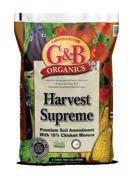


Aptos Landscape Supply


5035 Freedom Blvd. Aptos, CA 95003 (831)688-6211
Bokay Nursery 30 Hitchcock Road Salinas, CA 93908 (831)455-1868
Del Rey Oaks Gardens
899 Rosita Rd. Del Rey Oaks, CA 93940 (831)920-1231
Dig Gardens 420 Water St. Santa Cruz, Ca 95060 (831)466-3444
7765 Soquel Dr. #A Aptos, CA 95003 (831)688-7011
Drought Resistant Nursery
850 Park Ave. Monterey, CA 93940 (831)375-2120
Far West Nursery 2669 Mattison Lane Santa Cruz, CA 95062 (831)476-8866
The Garden Company 2218 Mission St. Santa Cruz, CA 95060 (831)429-8424
Griggs Nursery
9220 Carmel Valley Rd. Carmel, CA 93923 (831)626-0680
M.J. Murphy Lumber
10 W. Carmel Valley Rd. Carmel Valley, CA 93924 (831)659-2291

Available ONLY at Independent Garden Centers GB-Organics.com
Martins’ Irrigation 420 Olympia Ave. Seaside, CA 93955 (831)394-4106
McShane’s Landscape Supply 115 Monterey Salinas Hwy Salinas, CA 93908 (831)455-1369


Mountain Feed & Farm
9550 Highway 9 Ben Lomond, CA 95005 (831)336-8876
The Plant Works 7945 Highway 9 Ben Lomond, CA 95005 (831)336-2212
San Lorenzo Garden Center
235 River St. Santa Cruz , CA 95060 (831)423-0223
Scarborough Gardens
33 El Pueblo Rd. Scotts Valley, CA 95066 (831)438-4106
Seaside Garden Center 1177 San Pablo Ave. Seaside, CA 93955 (831)393-0400
Sierra Azul NurseryGarden 2660 E. Lake Ave. Watsonville, CA 95076 (831)728-2532
Valley Hills Nursery 7440 Carmel Valley Rd. Carmel, CA 93923 (831)624-3482
Get fresh updates on our work to ensure the future of agriculture includes all Americans.
farmland.org
Discrimination against marginalized groups in agriculture negatively affects all Americans by limiting the opportunities for farmers, workers, and consumers.
AFT is raising up diverse voices in agriculture, because we believe diversity contributes to a more resilient agricultural system, a stronger economy, and a more equitable society.

At American Farmland Trust, we believe agriculture is strengthened through diversity, just like the soil.
 Courtesy chef Antonio Vargas, Blue Zones Project—Monterey County
Courtesy chef Antonio Vargas, Blue Zones Project—Monterey County

Throughout Monterey County, the Blue Zones Project works with local restaurants to add dishes like this one to their menus so diners have healthy choices. Blue Zones-inspired menu items are plant based, featuring vegetables and whole grains. They also include ingredients commonly used in the parts of the world where people live the longest, such as the limes, garlic, onions, avocados, mushrooms and olive oil featured in this recipe.
Chef Vargas’ vegan version of chipotle crema is made with tahini, or sesame seed paste, as the base. Sesame seeds and chiles are a traditional combination in Mexico, think salsa macha (a Veracruz salsa made with nuts, seeds, peppers and oil) and mole (made with nuts, seeds and dried peppers). The chef tames the natural bitterness of the tahini with the acidic lime juice and the smokiness from the chipotle to round out the flavors.
He explains that in Spanish mojo de ajo literally means moistened with garlic, and recommends getting fresh oyster mushrooms from Lake Family Forest Farms in Carmel Valley.

12 ounces oyster mushrooms
Corn tortillas, for serving
1 tablespoon olive oil
For the chipotle crema
½ cup tahini
½ cup water
2 chipotle peppers, in adobo sauce
Juice of 2 limes
½ teaspoon kosher salt
For the mojo de ajo
4 cloves garlic, finely grated
Juice of 1 lime
1 tablespoon olive oil
½ teaspoon low-sodium soy sauce

¼ teaspoon ground cumin

¼ teaspoon paprika
¼ teaspoon kosher salt
For serving (optional)
Sliced avocado, sliced radishes, thinly sliced white onion, cilantro leaves with tender stems and lime wedges
In a small blender make the chipotle crema by adding the tahini, water, chipotle peppers, lime juice and salt. Blend until smooth, set aside.
In a small bowl, make the mojo de ajo by mixing the garlic, lime juice, olive oil, soy sauce, cumin, paprika and salt.
Add a tablespoon of olive oil to a pan and heat over medium-high. Once the oil is shimmering add the mushrooms. Press the mushrooms down flat with the back of a spatula to encourage browning. Flip the mushrooms once they have developed color, after about
1–2 minutes, and begin to spoon the mojo de ajo sauce over them. When the other side has also browned, flip again and add the rest of the mojo de ajo sauce, flipping back and forth in the sauce to fully coat the mushrooms and develop color.
Heat a separate pan over medium-high and warm the corn tortillas in a single layer, turning halfway through. Transfer to plates. Top the warm tortillas with the mushrooms al mojo de ajo and garnish with sliced avocado, radish, white onion and cilantro. Drizzle the tacos with chipotle crema and serve with lime wedges. Serves 3.
 Livestock farmer Ryan Abelson is the owner of Pajaro Pastures.
Livestock farmer Ryan Abelson is the owner of Pajaro Pastures.
It’s dinnertime at Pajaro Pastures and farmer-owner Ryan Abelson scatters feed to the pigs, chickens and goats in a series of sprawling hillside pens. “It’s like a little mosh pit,” he says with a laugh as the animals drown out his voice with a cacophony of squeals and squawks.
Abelson started Pajaro Pastures in 2012 as an ecological ranch. To him this means farming in harmony with the environment and society, sustainably and mindfully. He raises egg-laying hens as well as heritage breed pigs and occasionally other animals, and recently started partnering with other small farmers to diversify what he sells to a growing network of chefs and individuals through his website and at farmers’ markets.
The current iteration of Pajaro Pastures looks quite different than when Abelson started it 10 years ago, farming on rented land and using homemade equipment.
“Living somewhere else, renting land, it’s hard to build a business on that,” he shared. “Today things are still hard but there is a path to make more money and to have work-life balance. I still like it and I think it’s fun, even though being a pig farmer is sometimes really intense…you know, like loading a 700-pound animal into a trailer.”
Raising animals was not Abelson’s lifelong calling but after pursuing environmental studies at UCSC and interning at Fogline Farm, TomKat Ranch and Everett Family Farm, he got his first flock of laying hens.
“I really liked working with the animals, and I had always noticed that eggs were the hottest commodity,” said Abelson. “I started off with a few thousand dollars loaned from my parents. I bought 350 day-old chicks, they came in the mail and I built a little PVC hoop house with heat lamps…all at my spot in Soquel where I could have this little shanty chicken coop.”
A DIY enthusiast, Abelson made every single piece of equipment by hand in the early days. When his mail-order chicks needed more space, he transformed a 30-foot motorhome from the junkyard into a mobile chicken coop, and then relocated to a larger plot in Watsonville.
“Building stuff has always brought me joy, but when you’re making something from scratch, you inevitably mess up or something goes wrong,” Abelson admits. “I’m a better builder and fabricator because of it, but the learning curve was really steep. Now I don’t build everything…but I do still build a lot of stuff.”
When living 15 miles away from his farm proved too difficult, Abelson moved his operation to a 90-acre spot he rented across the street from his house in Soquel and then to the nearby Seventh Day Adventist Conference Center. The arrangement with the church was mostly good, except he had to vacate for a month each summer when camp was in session. Even still, he made it work for three years while maintaining sustainable practices and expanding beyond eggs to also raise ducks, rabbits, goats, sheep and pigs.
“Each time to move the farm I would be dragging all these animals across town,” he says. “Between every property, there were so many moments of almost giving up but there was always some glimmer of hope. Somehow, I always made it work, networking and knocking on doors. I thought it was worth it, and I still think it is.”


In 2016, a serendipitous conversation connected Abelson to the property that started as another rental, but eventually became the permanent home of Pajaro Pastures and Abelson himself: a sweet plot of farmland and a classic farmhouse and assortment of barns and sheds situated near Corralitos Creek.
“One of my customers said, ‘We need more eggs,’ and I was like, ‘I need more land!’ so she told me to call her friend,” he says. Two weeks later Abelson started leasing the land and then eventually moved into the house when the previous tenants left. Things seemed to be settling down, until Abelson was greeted by a bank fore-
“I used to think we just need more small farms, but I am stepping away from that idea and from the idealization of the American small farmer.”
Luckily, Abelson had learned from his past experiences to get a formal lease—which protected him as the bank tried to evict him while simultaneously listing the property on auction sites. After being summoned to court by the bank and showing up in his farmer’s best (muck boots and Carhartts) to prove he had a legal lease until 2023, Abelson got to thinking. The bank only wanted one thing, to sell the property, so he started making lowball offers. Eventually, the bank accepted one.
“Now that I’m here on this property I don’t have to worry about all that crazy stuff, like ‘where am I gonna be in three months?’ That was like eight years of my life, worrying about myself and all these chickens and dogs and goats and everything.”

With the search for a “forever pasture” over, Abelson refocused on eggs and pork. Nowadays, he usually has 20 to 30 pigs, ranging from Berkshire to Gloucestershire old spots to duroc heritage breeds, around 400 laying hens that produce 120 dozen eggs a week and random assortments of goats and sheep at times. The pigs spend their days in pens that roll into a dense oak forest full of acorns and other morsels, while the chickens and occasional goats or sheep have far-reaching yards in which to mill about in search of tasty treats.

 closure notice on the door. The property owner hadn’t paid the mortgage since 2007 and the bank wanted him and his animals out.
closure notice on the door. The property owner hadn’t paid the mortgage since 2007 and the bank wanted him and his animals out.
Pajaro Pastures’ success has come not just from raising animals but also from constant creativity. In the early days, that meant making tools or fixing old equipment. These days, it means building added value things like meat smokers for special events and collaborating within the local food system to scale sustainable farming practices.
A few years back, Abelson started working with Carmel Valleybased rancher and “pig guru” Linda Ferrasci to learn more about the art of pig raising. With the recent addition of a 700-pound heritage breed boar from his guru, Abelson is starting to breed pigs for the first time. By October he expects to have 30 piglets that he will raise in the same pens as their mothers until it’s time to wean, a very rare practice in pig farming according to Abelson.
More recently, Abelson started renting commercial kitchen space in Scotts Valley to butcher, prepare and package meat—taking on another step in the process. Renting the space has been a game changer, making the business a bit more lucrative and giving him creative control over the product, like his perfectly seasoned, top-selling Italian sausage.
It’s also allowed him to cut and sell meat for lamb and beef ranchers in the area, helping them expand their reach while offering Pajaro customers a wider array of protein both online and at markets. “This way, I don’t have to have my own cattle breeding operation or lease a 200-acre ranch. I can diversify and get more product, and customers want it.”
The kitchen is further connecting Abelson to other players in the local food system, like chef Jessica Yarr who featured his meat in an Outstanding in the Field event last June. “That’s what it’s always been about for me, not being an island,” he said. “Everyone has been along for the ride, and that part has kept me going, how excited and passionate the community is about this.”
In addition to new connections, Abelson has long-time collaborators like Full Steam Dumpling chef-owner Andy Huynh. Abelson and Huynh hit it off after meeting in 2016, first becoming friends and then
business partners when Huynh started using Pajaro Pastures products in his cooking. The two talk weekly about the current inventory, whether it’s pork, chicken, lamb or eggs, and how those items might appear on Full Steam’s menu.

“I’ve seen his processes and it’s really cool to see someone farming like that. And it’s nice really knowing your farmer and getting to go out and see the animals and interact with them,” said Huynh. “His stuff is so delicious; it inspires me even more. I am always trying to prepare it in a way that makes it shine in the best way possible.”
With his operation established, Abelson is eager to get more people to the farm by participating in the Corralitos Open Farm tours this fall, and hosting more farm dinners. He’s also finding more chances to collaborate with existing chef friends and meet new chefs to work with for events on and off the farm.
After years of just focusing on production, Abelson can now dig into “all the good parts of farming that no one tells you about,” like price sheets, marketing, sales software and everything else that goes into making a farm a business.
“I used to think we just need more small farms, but I am stepping away from that idea and from the idealization of the American small farmer,” he said. “I enjoy farming more now because I have a more realistic perspective of it. You can only make the small farming model so efficient, and then it becomes a scale thing. In small farm circles, scale is the anti-Christ. But I am getting serious about diversifying and scaling my operation, not in a scary way but in a way that will really sustain this.”
Ashley Owen is a writer and recent Massachusetts transplant. Her passion for learning about local food is only overshadowed by her passion for writing about it. Or maybe eating it. Safe to say, she is a lover of food and words, and also driving very fast in the left lane.
 Courtesy Andy Huynh, chef-owner, Full Steam Dumpling
Courtesy Andy Huynh, chef-owner, Full Steam Dumpling
3–5 pounds Pajaro Pastures pork shoulder

For the marinade
½ cup brown sugar
1 cup light soy sauce
½ cup dark soy sauce
½ cup Shaoxing cooking wine
2 tablespoons sesame oil
2 teaspoons red pepper flakes
1 tablespoon sambal paste
2 cups stock or water (enough to submerge pork)
For the char siu sauce
½ cup brown sugar
2 cups honey
1¼ cups hoisin sauce
7/8 cup soy sauce
1½ tablespoons Chinese five spice blend
1½ tablespoons Korean chili pepper flakes
2 tablespoons sesame oil
2 tablespoons fermented bean curd (if you can score this, it takes the sauce to the next level)
Combine marinade ingredients in a bowl, except for stock or water. Whisk well to dissolve sugar.
Slice pork shoulder into pieces measuring about 8 by 3 by 3 inches. Cover with the marinade and add enough stock or water to submerge pork pieces.
Marinate in the refrigerator for 8–10 hours or preferably overnight.
The next day, preheat oven to 350° F. Remove pork from the marinade and let it drip a bit.
Place pork on a wire rack over a baking tray and roast for 45 minutes.
Lower oven to 280° F and roast for another 45 minutes, until slightly charred and internal temperature reaches 165° F.
While meat is cooking make the char siu sauce by combining all ingredients in a sauce pan. Bring it to a slow simmer and stir well to dissolve the sugars.
Simmer for 15–20 minutes to let the flavors and spices marry and mellow out the hoisin sauce.
Brush finished sauce on the pork towards the end of the roasting time or use it later for dipping.
Remove pork from oven and let it rest for 15–30 minutes and slice right in. Or refrigerate and enjoy it in fried rice, in sandwiches, on salads or on its own.
Note: If you don’t have dark soy sauce, you can substitute regular soy sauce in a pinch. If you don’t have Shaoxing cooking wine, you can substitute sake in a pinch.

That cherished time of the day has finally arrived; it’s time to slow down and relax with friends. When cocktail hour rolls around, I like to bring the garden to our glasses and create something refreshing and flavorful using just-picked ingredients, while hopefully adding a bit of nourishment.
In all my kitchen endeavors, preparation and techniques are simple. Everything is rooted in making good use of the herbs and produce that have been delivered in our weekly CSA farm share, what we’ve picked up at the farmers’ market and what is growing in our garden. Letting locally grown, seasonal ingredients drive the direction of the cocktails helps limit the number of decisions I need to make. Bringing the backyard garden to the glass does not need to be complicated.
Simple garnishes from the garden create exquisite results for even the busiest of weeknights. Calendula flowers, one of my favorite garnishes, consistently bring sunshine to the glass. A sprig of lavender added to a drink instantly brings calmness. Any edible plant can be used as a garnish: rosemary, mint, purple Thai basil or flowers like marigolds, nasturtiums and borages.
Infusing alcohol with herbs, fruits, vegetables and flowers produces clean flavors and, often, gorgeous col-
ors. If you are short on time, blending herbs with alcohol and straining works wonders for last minute get-togethers. Other ingredients, such as beets, transfer their earthy flavor quickly as well as their vibrant color, so be sure not to let them infuse for more than a few days. Nasturtium leaves and flowers, on the other hand, benefit from being able to infuse a few weeks to transfer their trademark peppery flavor.
Infusing syrups with garden treasures is another way to raise the bar on your cocktail skills. Start by making a simple syrup, combining 1 cup of water and 1 cup of sugar and bringing it to a boil. Alternatively, use 1 part local honey to 1 part warm water and stir to dissolve. Add 1/2 to 1 cup of your desired herb, such as mint, rosemary or French tarragon, and let the mixture steep until cool. Then strain and store the syrup in the refrigerator.
These cocktails are made just like I approach making all of our meals—nothing too fussy, always whole ingredients, not too sweet, while always adding an element of fresh green.
I reach to our garden, and rely on local farms to bring flavor and nourishment to the glasses that my friends and family gather to enjoy!
Grapefruit and vodka is classic and safe, but rosemary infused in the juice for 15 minutes makes an exciting addition. Known for remembrance, rosemary is also associated with celebrations.

Juice of 1 grapefruit
2 tablespoons rosemar y needles ½ teaspoon honey 1 ounce vodka Ice
Sparkling water Sprig of rosemary for garnish
Place grapefruit juice, rosemary needles and honey in a cocktail shaker. Muddle and let sit for 15 minutes. Add vodka and ice. Shake and strain into a glass filled with ice. Top with sparkling water to taste and garnish with a sprig of rosemary. Makes 1 cocktail.
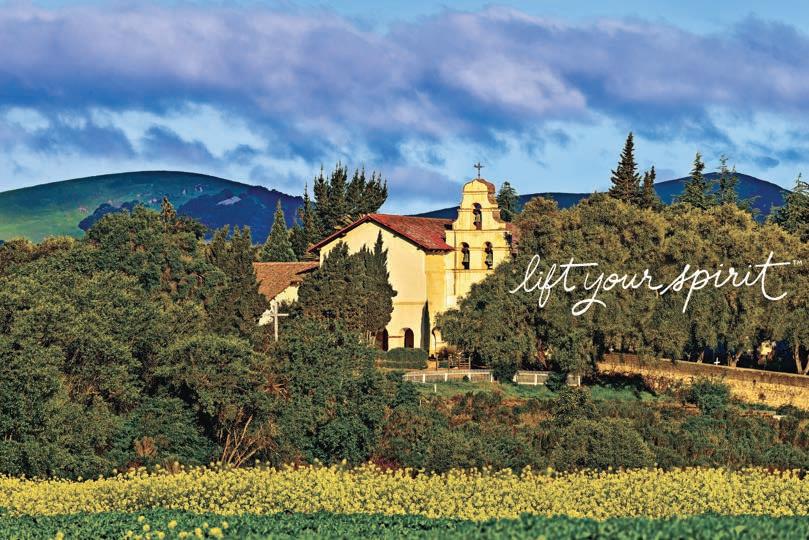



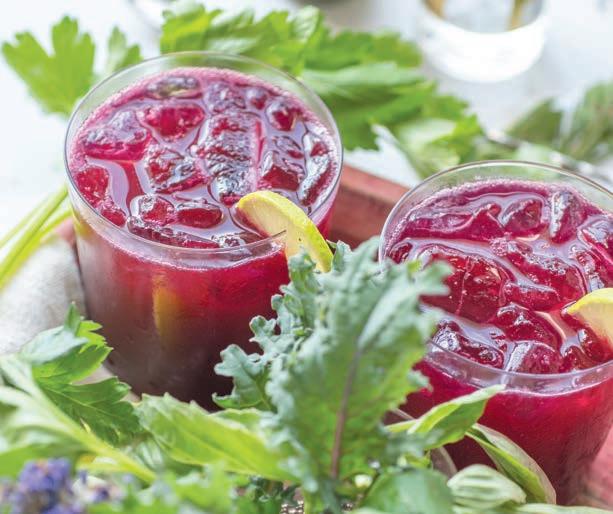


If you love beets, you will love this cocktail. The apple and lime sweeten and elevate the beet juice. If gin is not your spirit of choice, do not let that deter you from trying this cocktail. You’ll be surprised how boring a gin and tonic seems after trying this. Want to skip the gin? This combo makes a great mocktail too.
1 ounce beet juice*
1 ounce apple juice
½ ounce lime juice
1 ounce gin
Tonic water
Slice of lime, to garnish
Pour beet juice, apple juice, lime juice and gin into a cocktail shaker filled with ice. Shake and strain into a glass filled with ice. Top with tonic water, stir and garnish with a slice of lime. Makes 1 cocktail.
*If you don’t have a juicer, you can place chopped beets in a high powered blender with water. Peel and chop the 1 or 2 beets and add just enough water to blend. Purée and strain through a fine mesh strainer.
Spicy red pepper and a quick infusion of cilantro bring this margarita-like cocktail back to life.
Juice of 2 limes
1 ounce blanco tequila
2 tablespoons cilantro, chopped Ice
Sparkling water, to taste
Flaky sea salt
Espelette pepper (French red pepper)
Sprig of cilantro, for garnish
Edible flower, for garnish
Pour lime juice, tequila and chopped cilantro over ice in a cocktail shaker. Shake and strain into a glass filled with ice. Add sparkling water to taste. Sprinkle salt and Espelette pepper over the ice and garnish with a sprig of cilantro and edible flower of choice.
Makes 1 cocktail.

All natural pork and beef raised sustainably and humanely by independent U.S. family farmers and ranchers to produce The Finest Tasting Meat in the World ® .
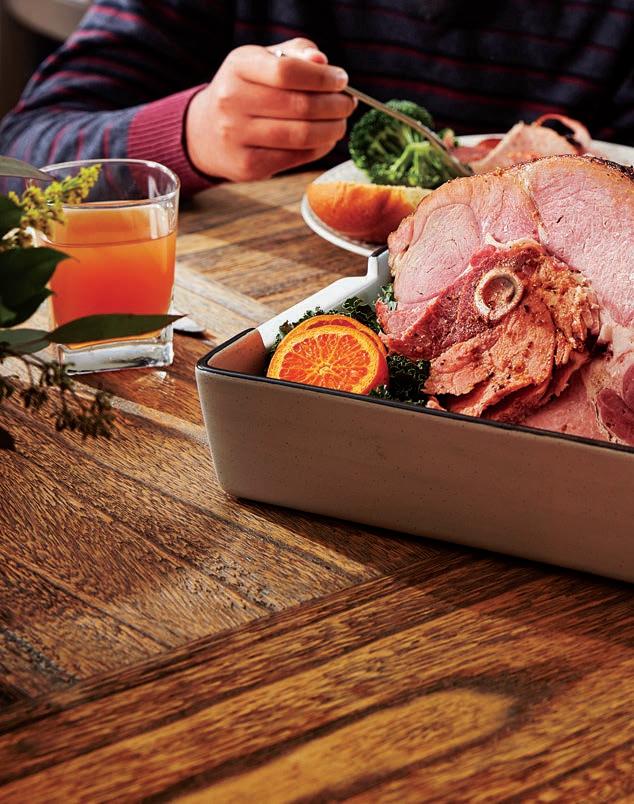
Enter into silence—no phones, no news, no email. Just solitude with a private view. We provide all meals, including Holy Granola, for your silent retreat.





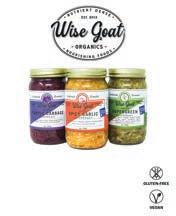

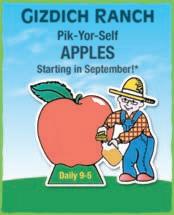

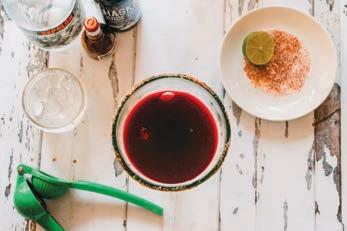









Persephone 7945 Soquel Drive 831.612.6511 • persephonerestaurant.com
With a namesake like the mythic Persephone, this restaurant in Aptos proclaims its deep reverence for seasonal cooking. Themes central to harvest, winter and spring are core to Persephone’s story, and are reflected in the changing menu at this fine dining destination, where chef Cori Goudge-Ayer presents inventive, ingredient-driven creations. The restaurant is a family-run passion project, bringing together parents, siblings and a long history of culinary arts in a beautifully redesigned space overlooking Aptos Creek. Open Th–Su noon–3pm, 5–close, Th–Sa. Second Sundays, themed wine tastings with small bites. Fourth Sundays, Winemakers Dinner with five-course pairing.

New Leaf Community Markets 161 Aptos Village Way 831.685.8500 • newleaf.com
This latest branch of the beloved local market group occupies the remodeled Hihn Apple Barn, built in 1891. In addition to local groceries and organic produce, New Leaf Aptos has made-to-order sandwiches, pizza, freshly rolled sushi, soup and hand-prepped salads, as well as a coffee bar, juice and smoothie bar and organic Straus soft serve ice cream. Open daily 8am–9pm.
Venus Spirits Cocktails & Kitchen - Beachside 131 Esplanade 831.688.8917 • venusspirits.com
Venus Spirits’ second location has views of the sand and refreshing sea breezes. Chef John Harry brings a Southern coastal vibe to the menu with appetizers like pimento cheese and hush puppies, along with raw or baked oysters Bienville. The southern hospitality continues into dinner with Low Country seafood boils, lobster rolls and burg-
ers. A fresh menu of cocktails—including Frozen Paloma Libres—complement the cuisine. Open W–Su 4–9pm. Happy hour W–Su 4–5pm.
The Penny Ice Creamery
141 Aptos Village Way, Suite 2 831.204.2523 • thepennyicecreamery.com
Open Su–Th noon–9pm, F–Sa noon–10pm. See The Penny description under Santa Cruz for more.
East End Gastropub 1501 41st Avenue 831.475.8010 • eastendpub.com
East End Gastropub is a sister eatery to the popular West End Tap & Kitchen, but aside from sharing owners and chefs, East End’s beautiful, modern interior is entirely different and offers its own robust, sophisticated menu. Chef Geoffrey Hargrave has created dishes that are familiar yet innovative, such as crispy Brussels sprouts with maple miso glaze and fresh fish en papillote. Shared plates, pizzas and salads come in generous portions for a family-style meal. The restaurant also offers a rotating selection of local beer, a strong wine list and seasonal craft cocktails. Open M–Th 4–9pm, F noon–9pm, Sa-Su 11am–3pm for brunch, and 4–9pm.
New Leaf Community Markets 1210 41st Avenue 831.479.7987 • newleaf.com
The café at the entrance offers great alternatives to fast food, serving economical daily specials, wraps, pizza and homemade soup and espresso drinks—with free wi-fi in the outdoor dining area. Inside the market, a full deli has made-to-order sandwiches, healthy takeout salads and entrée items. Open daily 8am–9pm.
The Penny Ice Creamery
820 41st Avenue 831.204.2523 • thepennyicecreamery.com Open Su–Th noon–10pm, F–Sa noon–11pm. See The Penny description under Santa Cruz for more.

Alvarado Street Brewery & Bistro
Carmel Plaza, Suite 112 831.293.8621 • asb.beer


From the team behind award-winning Alvarado Street Brewery, the Carmel bistro offers a full menu of ASB brews, along with hard cider, local wines and inventive craft cocktails. The menu goes beyond pub food to include oysters with mignonette or chili oil, Moroccan spiced fried chicken, crispy tempura-battered cauliflower and its popular burgers with truffle or garlic fries. Open Su–Th 11:30am–9pm, F–Sa 11:30am–10pm.
Covey Grill 8205 Valley Greens Drive 831.620.8860 • quaillodge.com/dining/coveygrill Covey Grill features USDA steaks and sustainably sourced seafood flavor enhanced by house-made spice rubs and sauces, in addition to seasonal American cuisine. Located inside the Quail Lodge lobby, Covey Grill offers casually elegant indoor and outdoor dining options against the stunning backdrop of Quail’s sparkling Mallard Pond and lush garden landscapes. Open for full dinner service Th–Su 5–9pm, with bar opening at 4pm, and M–W 4–8pm with weekday menu.
Earthbound Farm’s Farm Stand 7250 Carmel Valley Road 831.625.6219 • earthboundfarm.com
At its newly renovated Carmel Valley Farm Stand, Earthbound Farm’s 100% certified organic kitchen delights with housemade soups, sandwiches, salads, baked goods and fresh juices and smoothies. Food is available to be enjoyed on our beautiful grounds or for takeaway. Stroll through the gardens and learn about Earthbound’s commitment to organic integrity. Open daily 8am–6pm.
Grasing’s 6th Avenue and Mission 831.624.6562 • grasings.com
Chef-proprietor Kurt Grasing’s namesake restaurant has expanded since opening in 1998 to include two large dining rooms, multiple outdoor dining areas and the everpopular bar/lounge. A Carmel classic located in the heart of the village, Grasing’s serves California cuisine, with an award-winning wine list and twists on traditional cocktails. Open daily M–F noon–3pm and 5–9pm, Sa–Su 10:30am–3pm and 5–9pm.
Rio Grill 101 Crossroads Boulevard 831.625.5436 • riogrill.com
Deeply flavorful Southwestern cuisine is the specialty that executive chef Luis Osorio brings to the table for lunch and dinner. Go exotic with a corn truffle and wild mushroom tamale, go local with the fire-roasted Castroville artichoke or go wild west with an order of almond wood smoked BBQ pork back ribs. Open Su–Th 11:30am–8pm, F–Sa 11:30am–9pm.
Sea Harvest Fish Market & Restaurant 100 Crossroads Boulevard, Suite A 831.626.3626 • seaharvestfishmarketandrestaurant.com

The Deyerle family that owns this local gem has its own fishing boats for the freshest catch on the Monterey Peninsula. Sea Harvest doubles as a fish market and casual

restaurant with indoor and outdoor seating. The oysters and clam chowder are customer favorites, but don’t miss the fried combo platter, grilled fillets and fish tacos. Open daily 8am–8pm.
San Carlos Square, Between 5th and 6th avenues 831.250.7183 • thestationaery.com
A neighborhood restaurant offering daily brunch and lunch, Stationaery is owned by your hospitable hosts Anthony and Alissa Carnazzo. The kitchen team, led by chef Amalia Scatena, specializes in comforting flavors and local ingredients, with elegant presentations. A new bottle shop next door offers a good selection of European and California wines to enjoy with your meal or take home. Open W–M 8am–4pm. Closed Tu.
2 Chambers Lane
831.659.2472 • jeromescarmelvalleymarket.com
A chef-owned, friendly neighborhood market, Jerome’s offers local and organic produce, natural meats and seafood, and a great selection of domestic and imported wine, beer and microbrews. French-trained chef and owner Jerome Viel prepares delicious hot foods, sandwiches and salads for eating at outdoor seating or take-away. The offerings start with breakfast burritos, croissants and other French pastries in the morning, followed by favorites such as coq au vin, spaghetti carbonara and chicken enchiladas for lunch and dinner. Open M–Sa 7am–7pm, Su 7am–6pm.
Lucia Restaurant & Bar
Bernardus Lodge & Spa • 415 W. Carmel Valley Road 831.658.3400 • bernarduslodge.com
Indulge in artisanal California country cuisine, awardwinning wines and an expansive heated outdoor terrace with the finest restaurant view in Carmel Valley. At this Forbes 4-Star charmer, named for the Santa Lucia mountain range and wine appellation that beckons to the south, executive chef Christian Ojeda offers both a signature tasting menu and dishes à la carte. Wine list is equally notable. A chef’s table and wine cellar are also available for private dining and special occasions. Open daily 7am–9pm. Live music Tu–W 5–8pm. Saturday and Sunday brunch with live music 11am–2:30pm.

Wild Roots Market
6240 Highway 9 • 831.335.7322 (Felton) 13159 Highway 9 • 831.338.7211 (Boulder Creek) wildrootsmarket.com
Wild Roots’ 100% organic produce, natural groceries, organic meats and FishWise-certified seafood all go into the prepared foods offered by the store’s full-service deli, salad and soup bar and juice bar. Enjoy on the patio out in front or take home. Open daily 9am–9pm.
Elroy’s Fine Foods
15 Soledad Drive
831.373.3737 • elroysfinefoods.com
The dream market of owners Jay and Chloe Dolata, Elroy’s has an extensive range of gourmet groceries, local seafood, natural meats and fresh organic produce. It also boasts a kitchen with a wood-fired grill and prepared foods to go or to eat in. The Bar @ Elroy’s serves coffee, smoothies and a savvy selection of natural wines. Open M–Sa 8am–8pm, Su 9am–7pm.
Estéban Restaurant

700 Munras Avenue 831.375.0176 • estebanrestaurant.com
At the heart of the downtown Monterey dining scene, Estéban Restaurant serves Spanish influenced cuisine made from fresh, local, and seasonal ingredients. The menu features a selection of long-time Estéban favorites, as well as fresh, new dishes created by executive chef Mario Garcia, who spins out wonderful dishes like Crispy Pulpo, served with remoulade, Yukon potato, chorizo, rosemary chili oil and grilled radicchio. Open for dinner nightly 4–8pm. Tapas hour from 4–6pm nightly.
Jacks Monterey
2 Portola Plaza 831.649.7830 • jacksatportola.com

Jacks Monterey provides a refreshing culinary experience in downtown Monterey, inside the Portola Hotel & Spa. Emphasizing local ingredients, high-quality seafood, and an award-winning wine and cocktail program, Jacks philosophy derives from globally-inspired traditions of California Cultural Cuisine. The atmosphere at Jacks is sophisticated— never pretentious. Open for breakfast W-Su 6:30–10:30am, dinner W-Su 4–10pm, and bar only F-Sa 10–11pm.
Montrio
414 Calle Principal 831.648.8880 • montrio.com
Located in a 100-year-old former firehouse, Montrio has long been a favorite dining spot in Old Monterey. Now with a reimagined “cutting edge Californian” menu and Green Restaurant certification, executive chef Eddie Moran serves oysters, wood-fired Spanish octopus and onion soup gratinée, along with sustainable seafood dishes, local organic produce, prime meats and housemade desserts. Open W–Th 5–9pm, F–Sa 5–10pm, Su 5–9pm.
The Perfect Crumb Bakery 310 Lighthouse Avenue, Suite B 831.241.6269 • theperfectcrumbbakery.net A charming spot for breakfast or a light lunch, The Perfect Crumb specialty bakery and café gets rave reviews for its croissants, blueberry scones and cinnamon buns (served on weekends only). Heartier appetites will enjoy the breakfast sandwich with eggs and hash browns served on a homemade biscuit, and for lunch the grilled cheese or Mediterranean turkey sandwich with roasted peppers and sundried tomatoes. Open W–Su 7:30am–3pm.
Peter B’s Brewpub 2 Portola Plaza 831.649.2699 • peterbsbrewpub.com
Peter B’s Brewpub combines award-winning craft beer and sports on 18 high-definition televisions in a relaxed brewpub environment. Monterey’s original craft brewery is distinguished for its variety of beer on tap, innovative pub menu, happy hour, sports bar atmosphere, and outdoor dining on the pet-friendly heated patio with fire pits. Peter B’s is open Wednesday-Sunday with nightly happy hour from 4–6pm, as well as late night happy hour 9–10pm. Open W-Su 4–10pm. Sunday breakfast and football 9:30–11am from September to January.
Revival Ice Cream 463 Alvarado Street 831.747.2113 • revivalicecream.com

Revival serves up lovingly handcrafted, small batch organic ice cream, made using only the freshest, in-season, locally sourced ingredients. Favorite flavors include Bee’s Knees®, Banana Caramel, Eucalyptus Mint Chip and Dark Chocolate. Plenty of vegan and dairy-free options like Passionfruit Mango Coconut, Peanut Butter Chip and Pistachio available. They also have amazing vegan

and gluten-free waffle cones, made daily in-house and the popular Revival Ice Cream Sandwiches. Open Su–Th noon– 9pm. F–Sa noon–10pm.
Sea Harvest Restaurant & Fish Market 598 Foam Street 831.626.0547 • seaharvestmonterey.com
This fresh and casual seafood spot near Cannery Row is perfect after a day exploring the Monterey Bay Aquarium. There are grilled entrées and lots of fried options with chips, including calamari, clams, prawns, scallops and oysters. Try Sea Harvest’s popular clam chowder or a bas ket of crispy artichoke hearts. Open daily 9am–7pm.
Tarpy’s Roadhouse
2999 Monterey-Salinas Highway 831.647.1444 • tarpys.com



An award-winning steakhouse serving generous portions of California comfort food, Tarpy’s Roadhouse occupies a sprawling 3½-acre property and stone building that used to be part of the Ryan Ranch homestead. In addition to expertly prepared steak, enjoy wood-fired salmon, chilecrusted chicken, braised lamb shank, classic meatloaf and smoked baby back ribs. Open Su–Th 11:30am–8pm, F–Sa 11:30am–9pm.
Wild Plum Café & Bakery 731 Munras Avenue 831.646.3109 • thewildplumcafe.com
Located in Old Monterey in a vibrant and diverse neighbor hood, Wild Plum draws people from all walks of life with sustainable bistro fare that uses organic, locally sourced pro duce, hormone-free Diestel turkeys roasted on site, grass-fed beef and house-baked bread and pastries. Breakfasts include scrambles, omelets, and breakfast tacos and burritos, and for lunch, choose among soups, salads, sandwiches and pa ninis, burgers and house specialties. Food to go and catering available. Open W–M 7:30am–3:30pm, Tu closed.
Sea Harvest 2420 Highway 1 831.728.7081 • @seaharvestmosslanding
Outdoor tables on a wooden deck overlooking Elkhorn Slough are the perfect place to enjoy fresh seafood hauled in by a fisherman who is part of the Deyerle family that runs the restaurant. Choose from grilled catch of the day, shrimp Louie, fish and chips or some of the best Bajastyle battered fish tacos around. Open daily 11am–7pm.
Julia’s Vegetarian 1180 Forest Avenue, Suite F 831.656.9533 • juliasveg.com



Voted the best vegetarian restaurant on the Monterey Pen insula for more than 10 years running, Julia’s is known for its wild and exotic mushrooms and house-brewed kombu chas on tap. The menu features a creative twist on vegan, vegetarian and gluten-free food. Try some of the most popular dishes like the fried “egg and bacon” sandwich, exotic mushroom sampler and buffalo cauliflower wings. Open 9am–9pm daily.
Mezzaluna 1188 Forest Avenue 831.372.5325 • mezzalunapasteria.com
Owners Chef Soerke Peters and Amy Stouffer keep their restaurant simple and amazing—and chef Peters is a lead er in sustainability on the Monterey Peninsula.Pasta, moz zarella and gelato are made fresh daily. Starters include clam chowder with torched bone marrow and duck liver

pâté and grilled octopus, and there are five dishes starring locally crafted mozzarella. Pasta choices are imaginative and include options such as wild foraged mushroom agnolotti with brown butter sage sauce, pappardelle with wine-braised rabbit and potato gnocchi with gorgonzola and black truffle oil. Open W–Su 5–9pm. Closed M–Tu.
Wild Fish 545 Lighthouse Avenue 831.373.8523 • wild-fish.com

Owners Liz and Kelvin Jacobs welcome you to feast on the bounty of nearby waters and farms at their 100% local and organic seafood house, enjoying exquisite dishes like crispy sablefish, halibut and petrale sole, accompanied by local vegetables. Chef Elsah Payne also prepares fresh oysters, innovative salads, house-baked bread and sides like fingerling potatoes with poppyseed crème fraîche or baby carrots with wild nettle pesto, make this a dining destination. Did we mention English sticky toffee pudding for dessert? Open Su–Th 11:30am–3pm and 5–8:30pm, F–Sa 11:30am–3pm and 5–9:15pm.
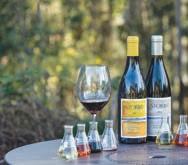
Bliss Blendz
300 Third Street, Suite A 831.593.1108 • blissblendzsmoothies.com
More than just a smoothie store, Bliss Blendz offers healthful açai bowls and a variety of refreshing, energizing drinks to get your day underway. There is a full menu of pourover coffee options, including bullet coffee and green monster mocha. Or stop by for lunch and try a salad loaded with superfoods like berries and nuts or indulge in the chia seed pudding. Open M–Su 10am–5pm.
Lolla 201 Third Street 831.593.5064 • lollasjb.com
Owner Sarah Griss has created a soup, salad and sandwich luncheonette in an adobe building right across the street from San Juan Bautista Historic Park. Lolla sources healthy food from local farms and food producers, giving customers a quick and convenient way to eat locally, seasonally and deliciously. Daily special soups are not to be missed. Open W–Su 11am–3pm.
Margot’s Ice Cream Parlor 211 Third Street 831.623.9262 • margotsicecreamparlor.com
Bringing smiles to the people of San Juan Bautista for 25 years, Margot’s was originally opened as a retail outlet for wonderful handmade candies, including chocolatedipped apricots, almond butter crunch, marshmallows, oreos, grahams and pretzels, as well as 10 flavors of chocolate truffles. In addition, it offers 28 flavors of Lappert’s ice cream, espresso drinks and Dole pineapple whip. Open Su–F 11am–8pm, Sa 11am–9pm.
Vertigo Coffee Roasters 81 Fourth Street 831.623.9533 • vertigocoffee.com
Artisanal coffee roasted on site as well as fresh pastries baked in-house, brunch items, local craft beers and wines, plus wood-fired pizzas with naturally leavened, twice fermented sourdough crust have made Vertigo a locals’ favorite as well as a great find for visitors en route to the San Juan Mission, Pinnacles or other area attractions. Open M–Tu 8am–4pm, W–Su 8am–8pm.
Barceloneta
1541 Pacific Avenue, Suite B 831.900.5222 • eatbarceloneta.com

With its cheerful beach stripes, wicker light fixtures and whimsical details, dinner at Barceloneta can feel like a holiday. Owned by chef Brett Emerson and his wife Elan, who ensures service is superb, Barceloneta offers Spanish tapas made with seasonal, farmers’ market produce and several types of authentic paella, along with Spanish wines, beers and cocktails. Open Tu–Sa 5–8:30pm. Closed Su–M.
Bookie’s Pizza
1315 Water Street bookiespizza.com
Located inside the Santa Cruz outpost of Sante Adairius Rustic Ales, Bookie’s Pizza is owned by fine dining veteran chef Todd Parker and offers “inauthentic” Detroit-style square pies. Each pizza is made using the best seasonal ingredients from local farms, fishermen and foragers. Dough is made with organic flour, naturally leavened for 48 hours, and each pizza comes with its own unique sauce. Open Su–Th noon–9pm. F–Sa noon–10pm.
Charlie Hong Kong
1141 Soquel Avenue 831.426.5664 • charliehongkong.com



Charlie Hong Kong has been providing the Santa Cruz community with healthy, sustainable, affordable and high-quality food since 1998. The colorful, casual eatery’s delicious fusion of Southeast Asian influences and the Central Coast’s local organic produce have made it an inclusive, family-friendly, neighborhood favorite. Its slogan is “love your body, eat organic,” and its cuisine is proof that fast food can be good for you. All signature dishes are vegan with the option to add meat or fish. Gluten-free options are available. Dog friendly. Open daily 11am–10pm.
Chocolate 1522 Pacific Avenue 831.427.9900 • chocolatesantacruz.com

As its name suggests, there are all kinds of decadent chocolate desserts at Chocolate the restaurant, but this farmto-fork local favorite is much more than a dessert spot. Everything is prepared simply and with local and organic ingredients whenever possible. Open Tuesday through Sunday for dinner, options include three kinds of chicken mole, roast pork with chocolate barbecue sauce, and their signature Pasta Rosettes! Cocktails feature Santa Cruzbased distilleries, including Venus Spirits. Check out their extensive hot chocolate menu. A party room for your special celebration is available, with seating and menu options to suit the occasion. Open Tu–Th and Su 4–8pm, F–Sa 4–9pm. Closed M.
Crow’s Nest 2218 E. Cliff Drive 831.476.4560 • crowsnest-santacruz.com
A perfect spot to enjoy breakfast and lunch or catch a dinnertime sunset over the harbor, the nautical-themed Crow’s Nest is a Santa Cruz institution that never goes out of style. There’s always something happening, from live music to comedy nights and happy hours. Famous for its salads, house-smoked salmon and seafood entrées, the Crow’s Nest is a member of Seafood Watch and is a certified green business. Open M–F 9am–8:30pm, Sa–Su 8am–8:30pm.

scheidvineyards.com
CARMEL TASTING ROOM SAN CARLOS & 7TH 831.626.WINE (9463)

ESTATE WINERY & TASTING ROOM 1972 HOBSON AVE., GREENFIELD 831.386.0316
Laílí 101B Cooper Street 831.423.4545 • lailirestaurant.com
Exotic flavors of The Silk Road are served in a stylish dining room decorated in eggplant and pistachio colors and on a hidden candlelit patio. Locals rave about Laílí’s homemade naan served warm from the oven with a selection of Mediterranean dips. There is a wide variety of deliciously spiced vegetable dishes, and all meats are hormone free and free range. Check website for opening information.
La Posta 538 Seabright Avenue 831.457.2782 • lapostarestaurant.com

A cozy neighborhood bistro not far from the Santa Cruz yacht harbor, La Posta chef Rodrigo Serna prepares traditional rustic Italian cuisine using local ingredients. The emphasis is on simple, seasonal selections, with the balance of the menu reflecting whatever produce is freshest right now. A sister restaurant of Soif Restaurant and Wine Bar, La Posta also offers a great selection of wines. Open W–Su 5–8pm, closed M–Tu.
New Leaf Community Markets 1134 Pacific Avenue 831.425.1793 • newleaf.com
New Leaf’s headquarters in a former bank building on Pacific Avenue is a worthwhile stop for all foodies. Crowded with gourmet natural foods, it also has a deli with sandwiches, salads and hot entrées. A dining area out front is great for people watching and listening to street musicians. Open daily 8am–9pm.
New Leaf Community Markets 1101 Fair Avenue 831.426.1306 • newleaf.com
The Westside New Leaf has a large deli counter and coffee bar, with a big selection of sandwiches, salads, bakery items, soups and other hot foods. You can eat at an instore counter or at tables outside. Open daily 7am–9pm.
The Penny Ice Creamery 913 Cedar Street 831.204.2523 • thepennyicecreamery.com
Lines out the front door of its converted Spanish bungalow are evidence of Penny’s popularity. All ice cream, including bases, is made from scratch on the premises using local organic ingredients when possible. Dozens of exotic flavors rotate seasonally, but two favorites are chocolate caramel sea salt and strawberry pink peppercorn. Open daily noon–11pm.
The Picnic Basket 125 Beach Street 831.427.9946 • thepicnicbasketsc.com
Across the street from the main beach, owners of The Penny Ice Creamery have opened an alternative to boardwalk fast food. Sandwiches, organic salads, coffee and beer, all from local food artisans, and of course Penny’s popular ice cream, are all on offer to eat in or outside with your feet in the sand. Open daily 7am–4pm.
Soif Restaurant and Wine Bar 105 Walnut Avenue 831.423.2020 • soifwine.com

Soif lives on as a bottle shop offering more than 400 hardto-find European and local wines, along with a wine bar serving wines by the glass. Pull up a barstool and let Soif’s experts introduce you to something new and amazing, while you nibble on wine-friendly small bites. Soif also offers educational wine tastings and its popular Teroiriste Wine Club. Open Tu–Sa 1–8pm.
Staff of Life
1266 Soquel Avenue 831.423.8632 • staffoflifemarket.com

A Santa Cruz landmark, Staff of Life started in 1969 as a small natural foods bakery and has grown over the years into a full service natural foods supermarket known for its local organic produce, seafood and natural meats as well as an extensive bulk department. Deli items and foods from the hot bar can be enjoyed at the Café del Sol. Open daily 8am–9pm.
Venus Spirits Cocktails & Kitchen
200 High Road 831.600.7376 • venusspirits.com
Craft distiller Sean Venus hosts a trifecta with a lively restaurant bar, the distillery itself and a tasting room. If you want to sample his award-winning gin and other spirits, try the tasting room. For cocktails and hearty plates from chef Gabrielle Molina, head for the kitchen part of the building and enjoy dishes like crispy Brussels sprouts, mole baby back ribs and elote chile relleno. Open W–F 4–9pm, Sa noon–9pm, Su noon– 8pm.
West End Tap & Kitchen
334D Ingalls Street 831.471.8115 • westendtap.com
Perfect for any parent looking for a happy hour to satisfy the whole family, adults and kids alike can’t get enough of the duck fat popcorn, fried calamari and flatbread pizzas. A diverse, season-driven menu with offerings like New York strip steak panzanella, seared oyster mushroom “scallops,” a Southern-style seafood boil and a long list of craft beers, ciders and wine options make West End a Westside staple. The outdoor patio is perfect for people watching amidst the bustling Swift Street Courtyard. Open daily noon–9pm.
Beer Mule Bottle Shop + Pour House 45 Aviation Way 831.254.9789 • kickassbeer.com
The Beer Mule has 40 brews on tap and hundreds more in the fridge, with an emphasis on local and NorCal beer. Food—courtesy of Butchers & The Mule—includes dishes like four-cheese mac and cheese, barbacoa short rib tacos, grilled tri-tip cheesesteak, hot or not fried chicken sando and Butchers’ jambalaya. Open daily 11am–10pm.
Gizdich Ranch 55 Peckham Road 831.722.1056 • gizdich-ranch.com
Visitors from all over love this fourth-generation, familyrun farm business that popularized the “pik-yor-self” experience just east of Watsonville’s Interlaken neighbor hood. Tour the farm, pick fresh apples or berries or watch the action inside the juice-pressing barn. No one leaves hungry if they spend time at the bakery-deli that pleases with its fresh pies, shortcakes and pastries, along with hearty sandwiches and box lunches. This family friendly experience is also a treat for kids, who will enjoy the wideopen spaces and the homemade popsicles. Open daily 9am–5pm.
Staff of Life 906 E. Lake Avenue 831.726.0240 • staffoflifemarket.com
Opened last spring, Staff of Life’s second store in Watson ville is its first and only branch. The store is sustainable down to its bones and includes all the natural groceries, organic produce and baked goods you’d find at the Santa Cruz store, along with a juice and smoothie bar, freshly made sushi, a gelato bar, a full deli and a hot bar. Open daily 8am–8pm.

09.24.2022
A farm-to-table event overlooking the Pajaro Valley featuring Live Earth Farm Produce
Multi-course meal by Chef Jessica Yarr and Chef Diego Felix Live Music & Auction Beer, Wine & Cocktail Pairings
100% of proceeds support farm-based nutrition, food systems and environmental education, and food security programs

The woman spoke earnestly of Yalapa’s magic. To be fair, many visitors to the tiny and semi-remote fishing village feel compelled to use that word. Such are the effects of its waterfalls, wildlife and workshops on everything from portal surfing to sacred orgasmic dance.
But this woman carries more credibility than others. Jeannie Hnytka first visited in 1989, long before WiFi and four-wheelers supplanted word of mouth tourism and still-popular donkeys, 12 years before she made it her home and host of her language school. (The WiFi still gets spotty when it’s cloudy out.)
“There’s magic here, but a different kind than other places,” she says in Spanish. “Yalapa reveals to you what you should learn.”
It showed me via pufferfish, polliwogs, land crabs, bonito and a special species of mezcal: raicilla.
It can be found at beach bars and trendy restaurants in Puerto Vallarta, where you can catch water taxis to Yalapa. Once at this jungle beach hamlet, though, the best spot to get the spirit made in the surrounding hills is in a local’s living room.
My innkeeper directed me down a dusty dirt road to meet a man in his 60s wearing a sweaty ribbed tank top over a spherical belly. While a soccer game played on the TV and his wife napped on an unadorned mattress, he decanted raicilla from big jugs into reused bottles that once held cheap vodka.
He wouldn’t budge on price, because he knows he’ll have no problem selling it. A sample quickly reveals why—it’s citrusy, vibrant, earthy mezcal that works like an upper rather than a downer, a sacred orgasmic dance in liquid form.
Raicilla is unsurprisingly scarce around the Monterey Bay. But suddenly it’s not as hard to find.
In a development that syncs poetically with the sixth anniversary of its debut in August 2017 (and Edible’s cocktail issue), Cultura Comida y Bebida in Carmel recently finalized a six-page, double-sided masterpiece of a mezcal list to complement its smart and health-conscious Oaxacan food from chef and partner Michelle Estigoy.
The spirits menu bursts with attentively sourced small-batch mezcals described by distiller, village and type of still used. There are scores of expressions all told, displaying depth and richness that makes a half-ounce
pour plenty (one-ounce pours are the other option, as are clever cocktails like the Beets by Day).
Cultura managing partner Michael Marcy took me through hummingbird-scale sips of each of the raicillas on the list, which also includes other rare, regional and non-Oaxacan mezcals like sotols and bacanoras.
“The qualities are getting consistent,” Marcy said, “and really good.”
Managing partner and chief mezcal curator Sarah Kabat-Marcy, who happens to be married to Michael, wants the extensive selection to do the ample agave options justice.

“It gives people the opportunity to explore the vast selection of Mexican spirits,” she says. “Each state has its unique options, and we want to let people in on what diversity there is, to experience the terroir of each spot and the artistry of each distiller.”
La Venenosa Etnica Tutsi, with a pleasantly rubbery nose and super clean profile, ranks among the most remarkable raicillas, but there’s not a miss in the group. Other standouts include a rich BoNeTe Costa distilled in a tree trunk, and its sister Sierra version, which carries the highaltitude terroir to the tastebuds like a well-made wine.
The sweetest of those I tried, a La Venenosa distilled in clay and resonant with caramel, might’ve been my favorite. The strongest, a sister Venenosa clocking in at 68 ABV, was stunningly smooth.
They’re great on their own, and also benefit from the contrasts that can be drawn between them. Paired with the sublime balance and seductive spice of, say, the house mango “ceviche” on a shaving of watermelon radish, a little splash of raicilla makes for—you guessed it—a type of magic all its own.
One final spirits story about an elusive variety of mezcal
